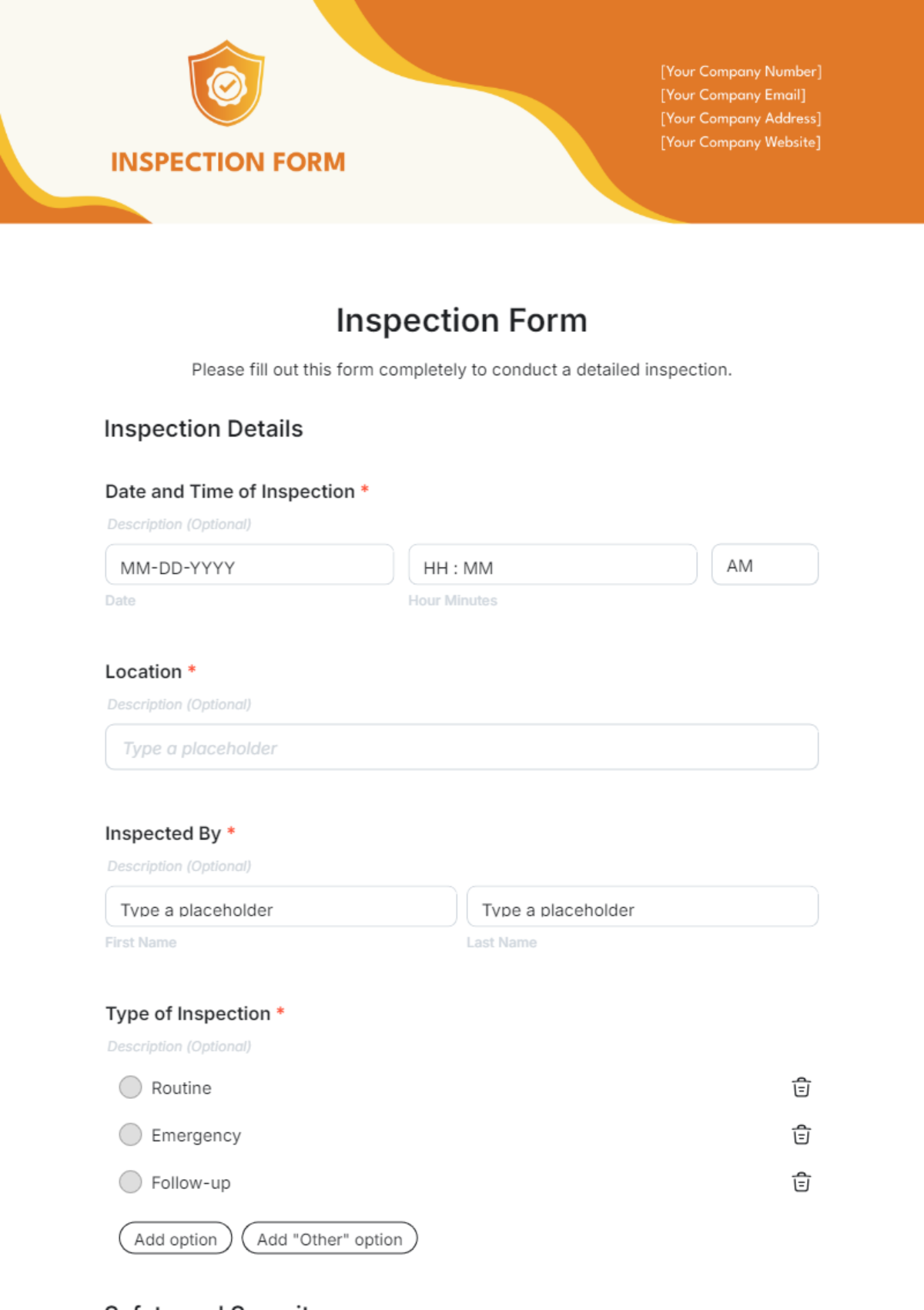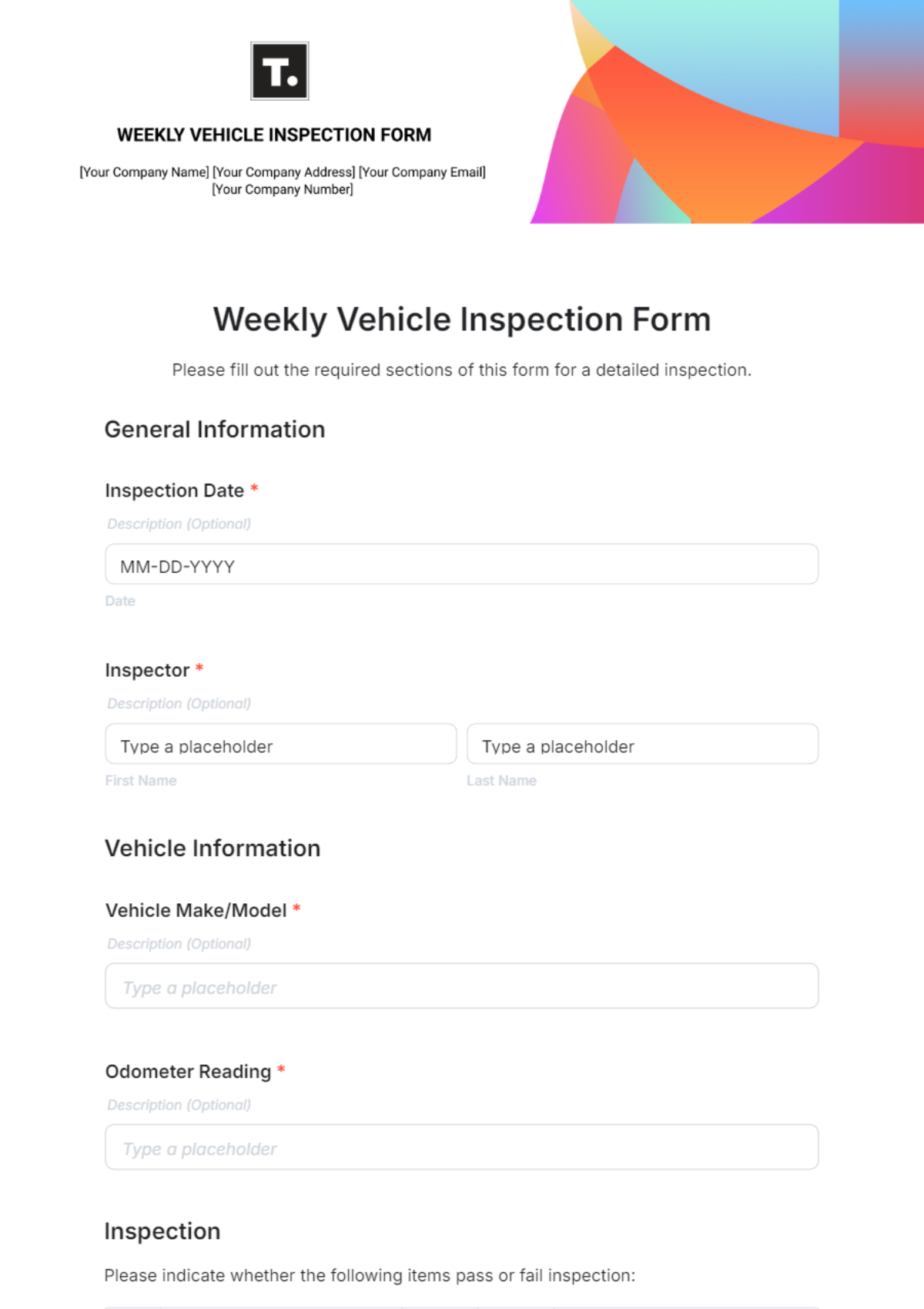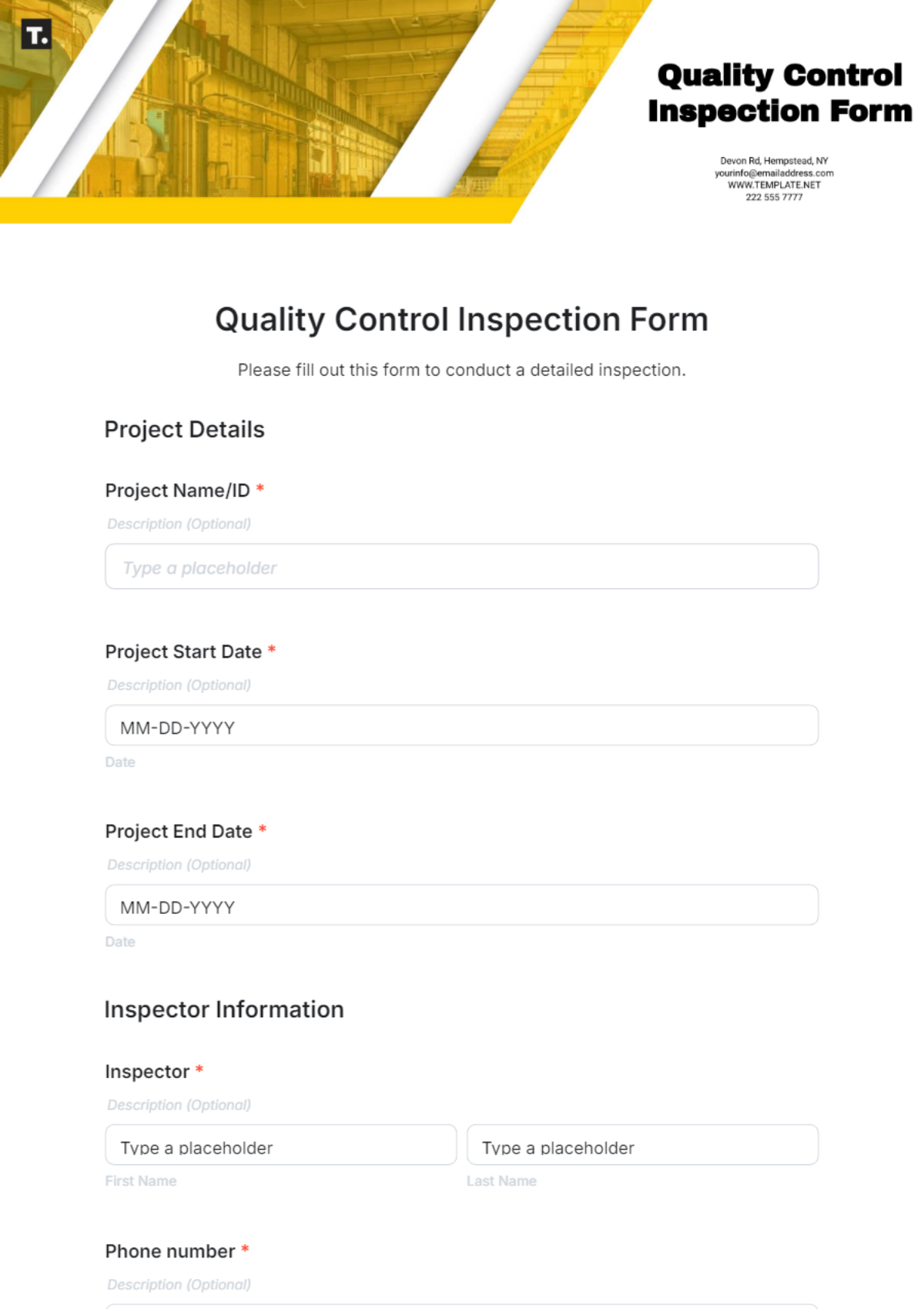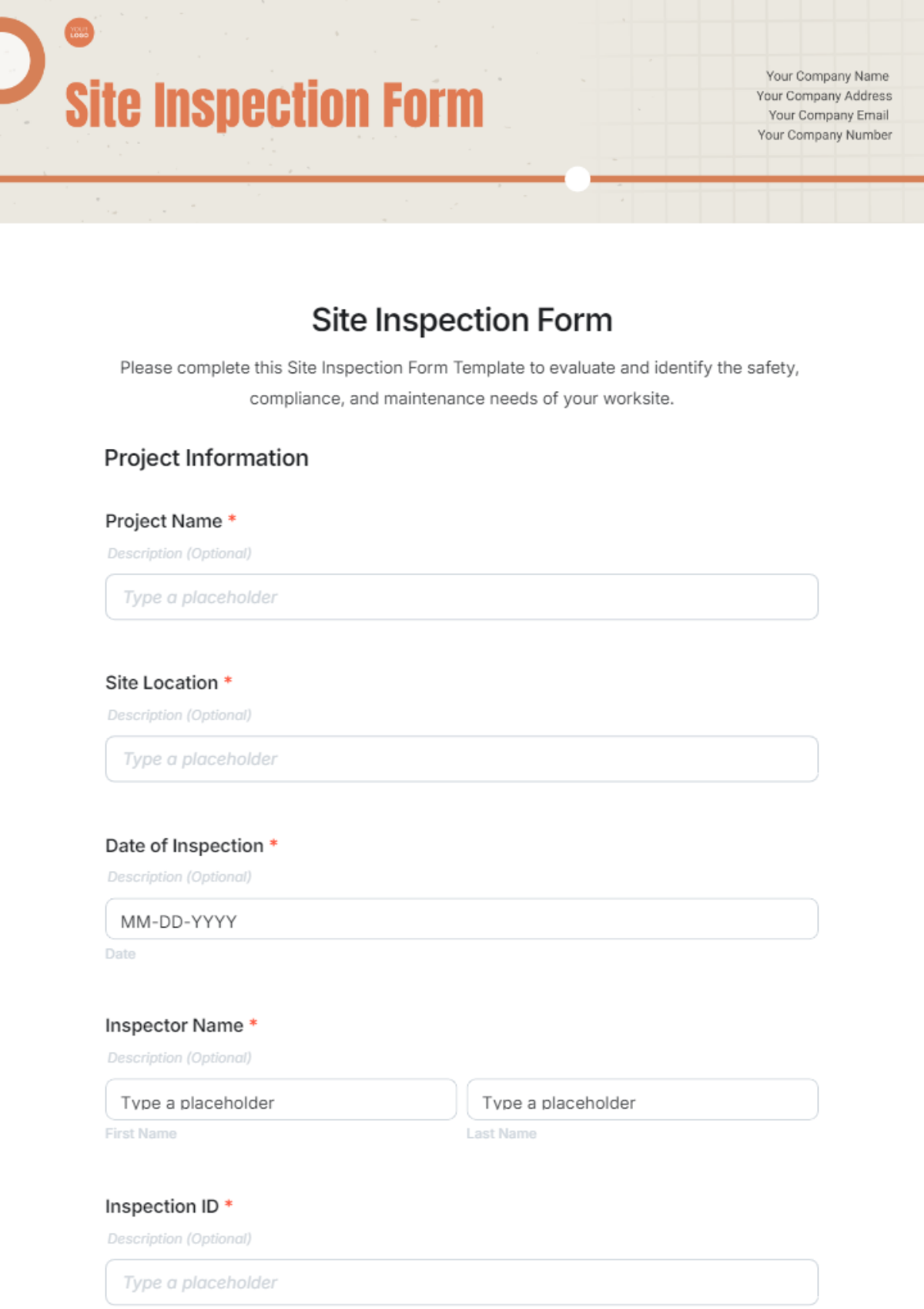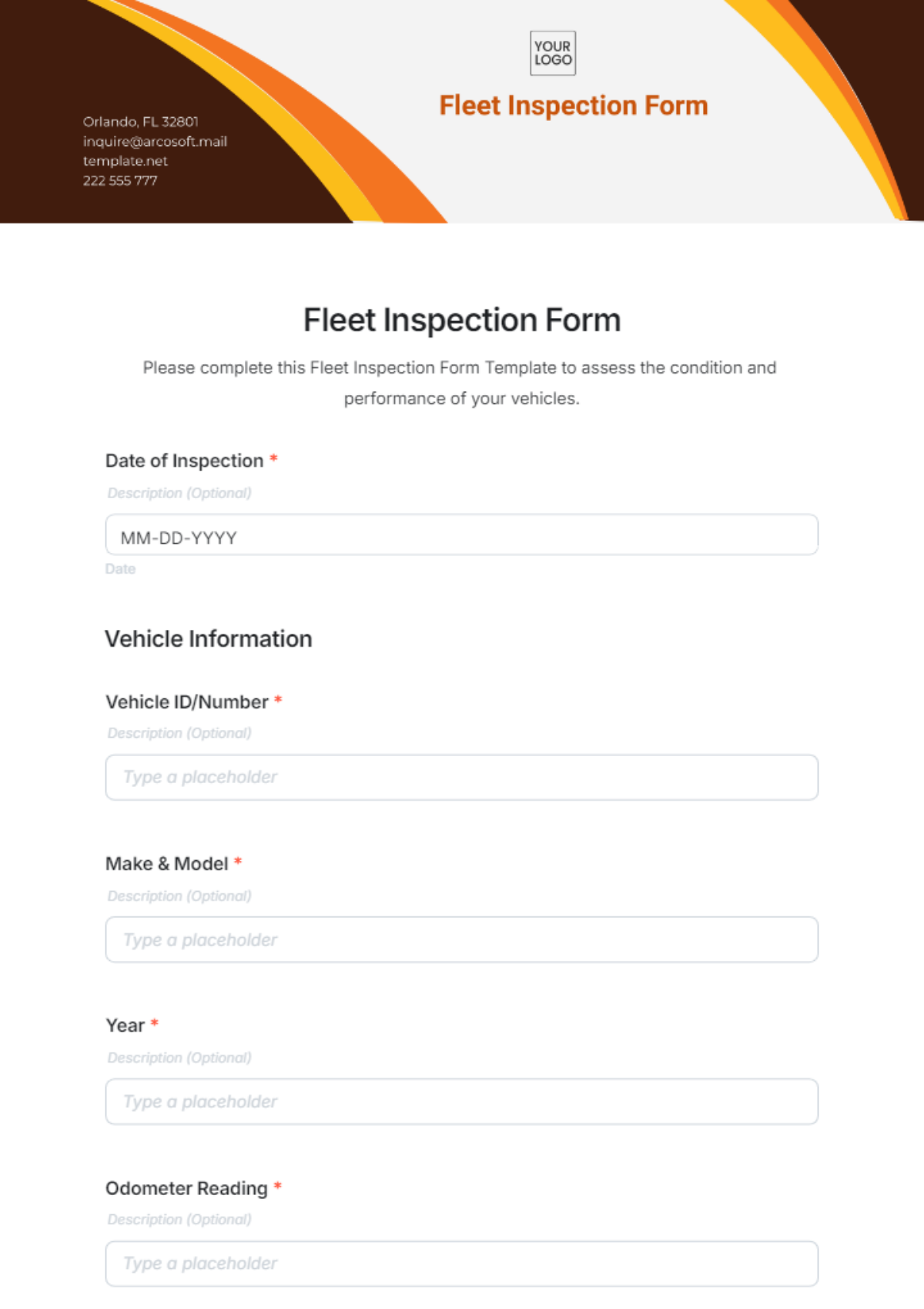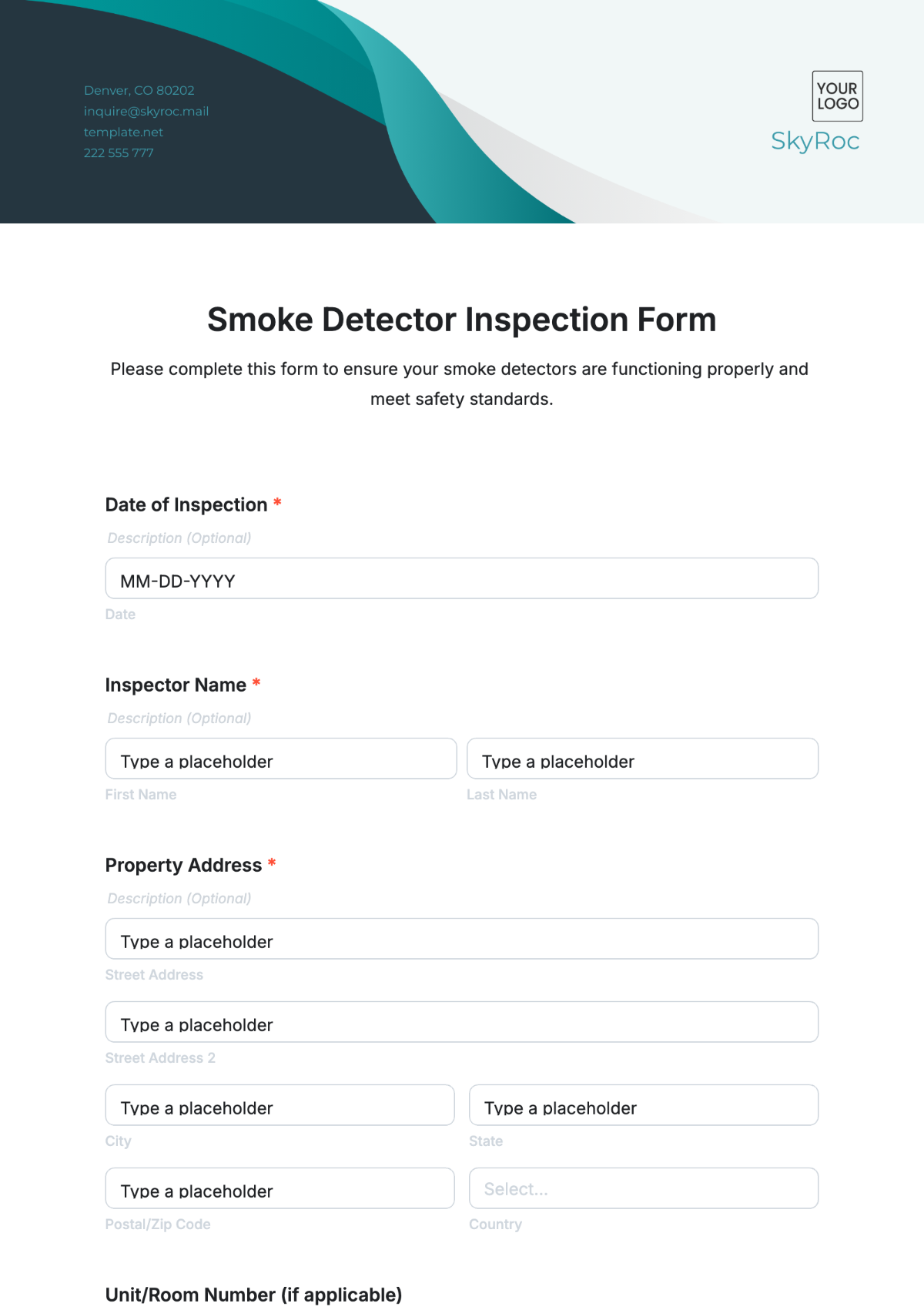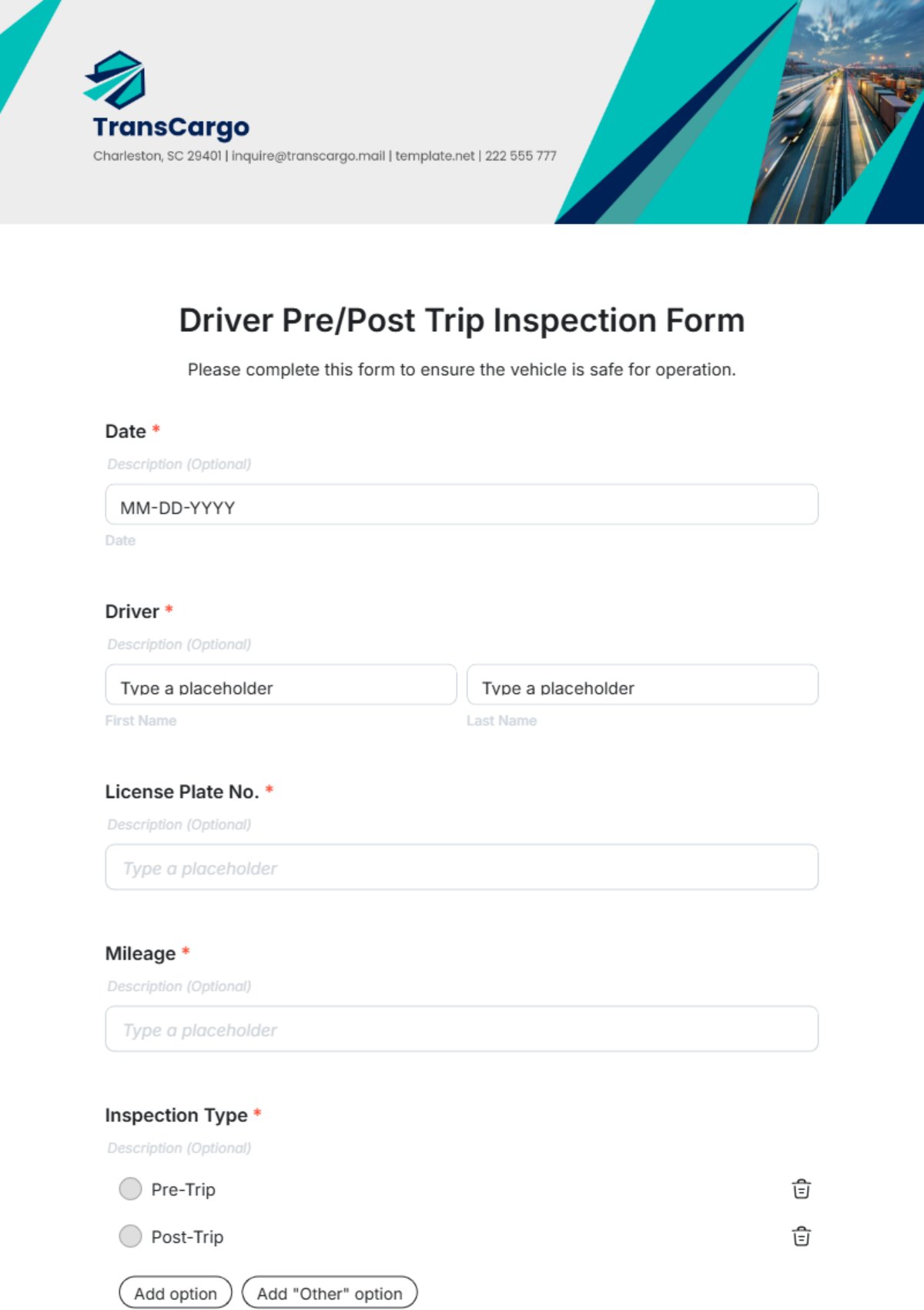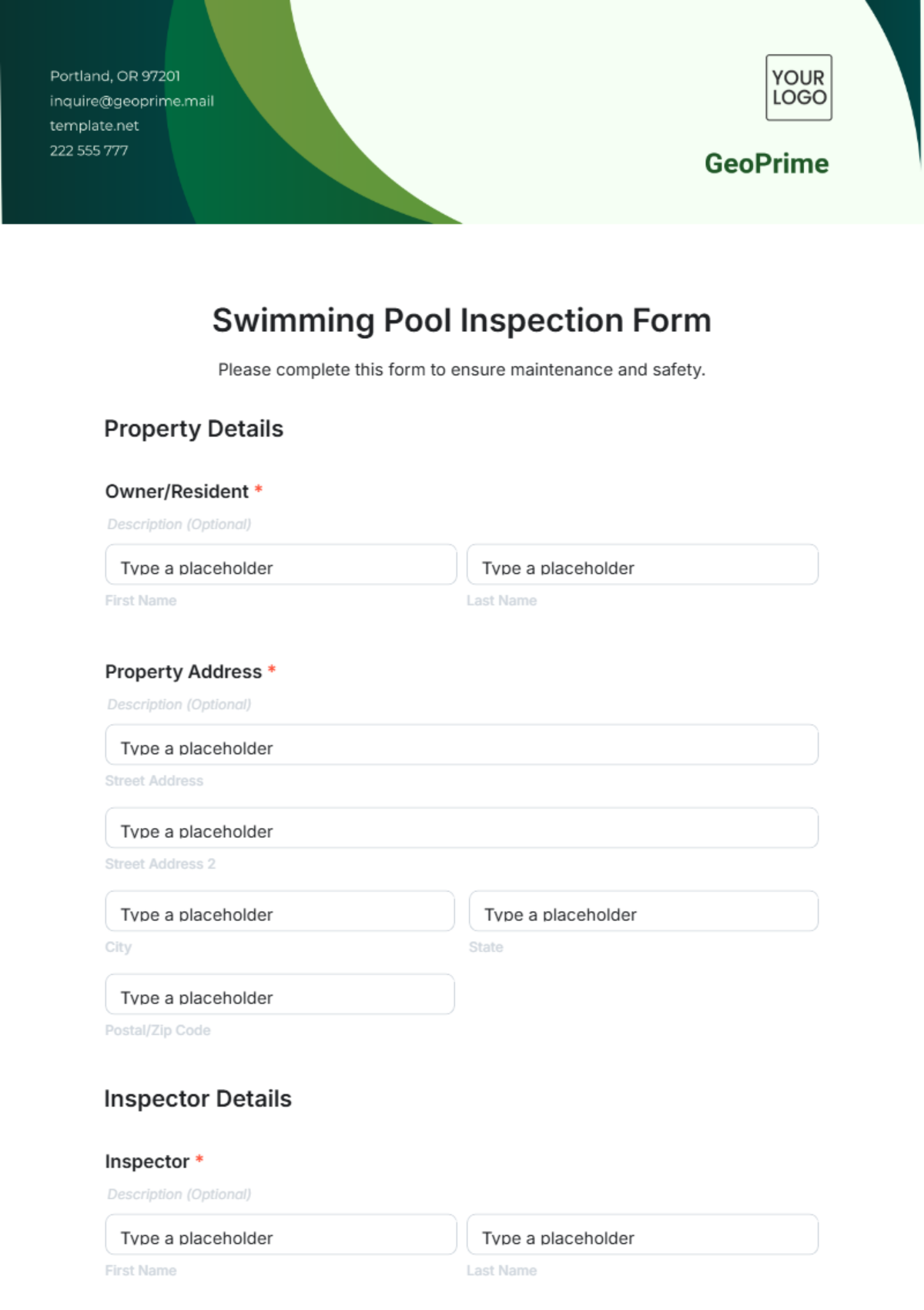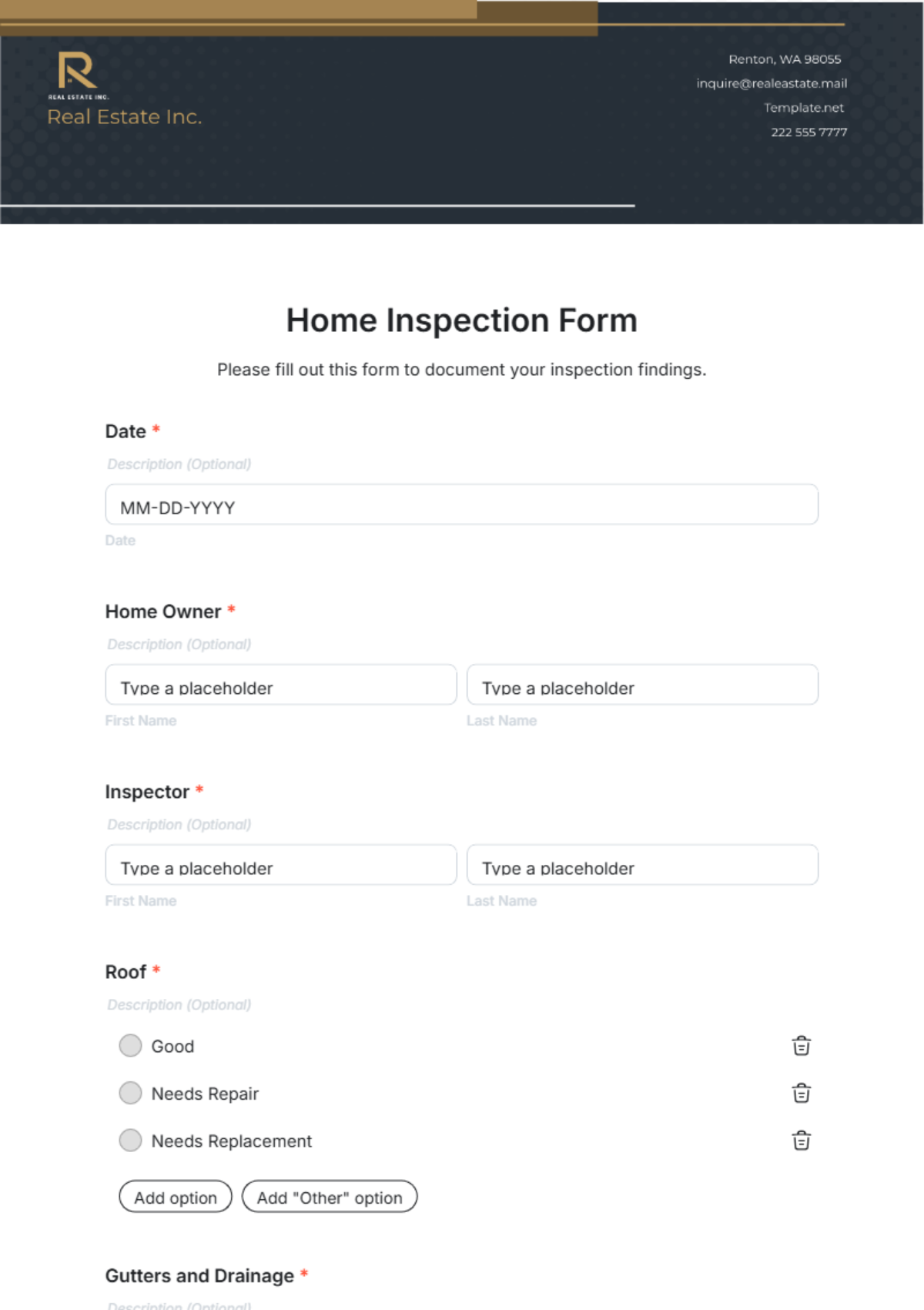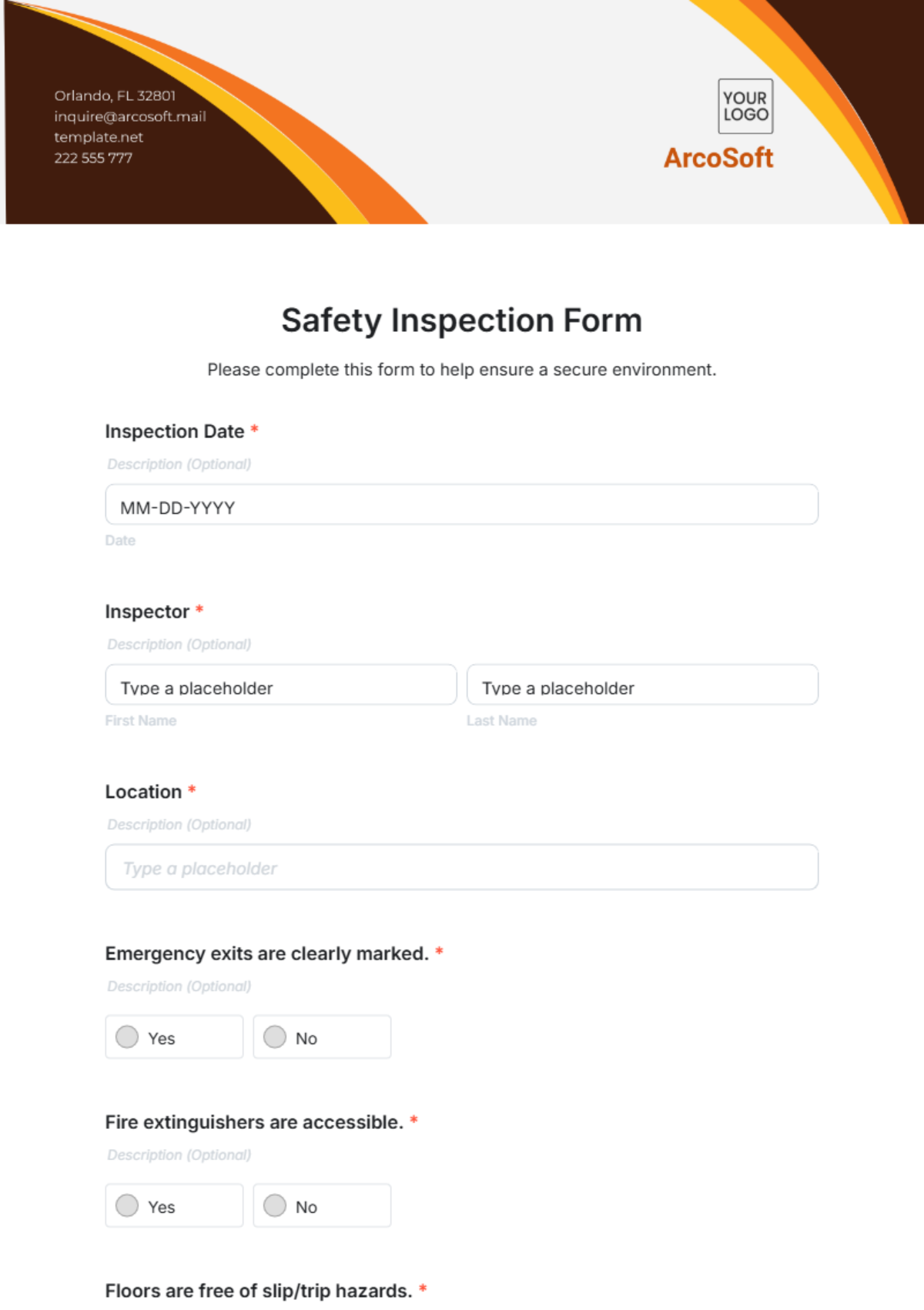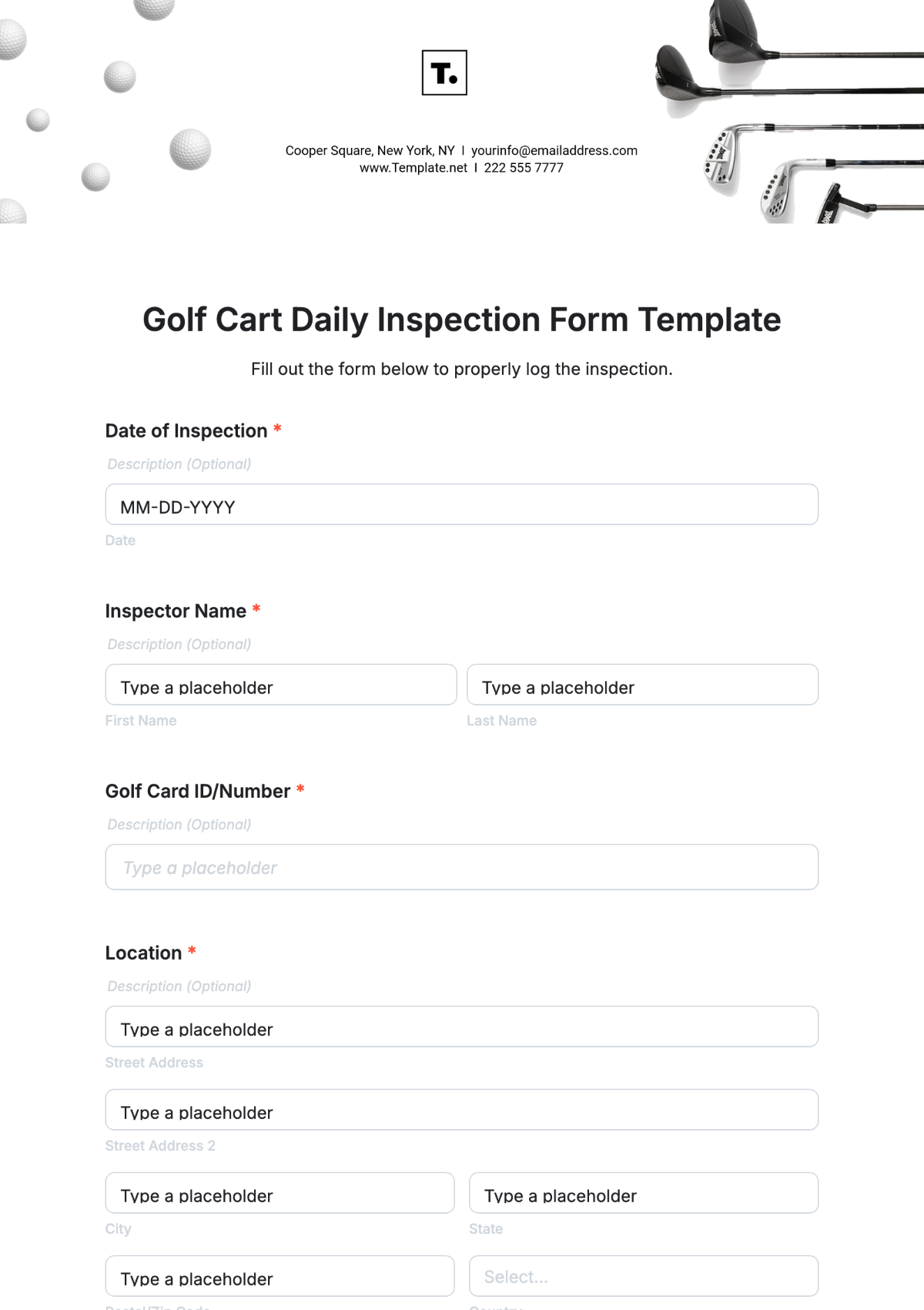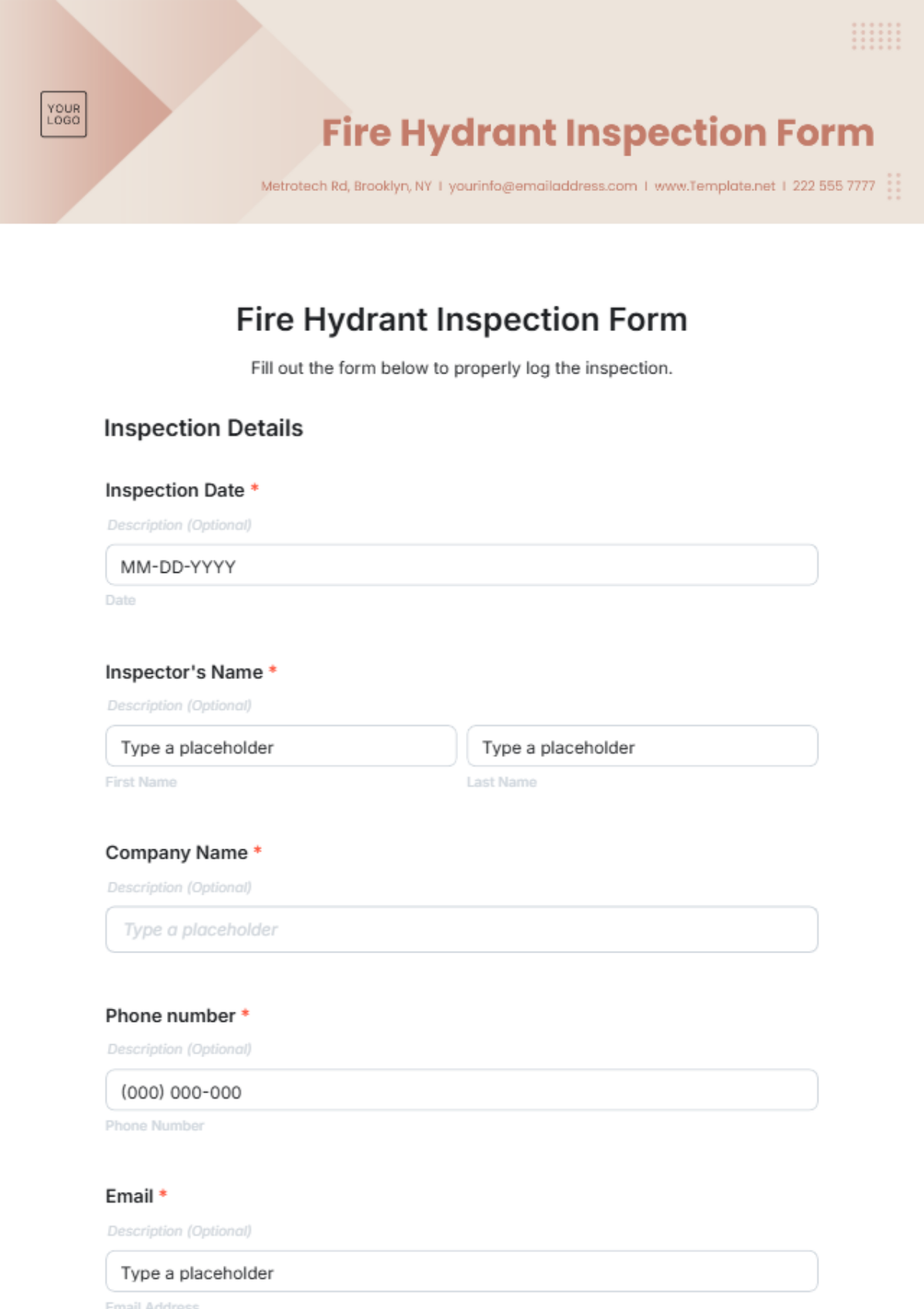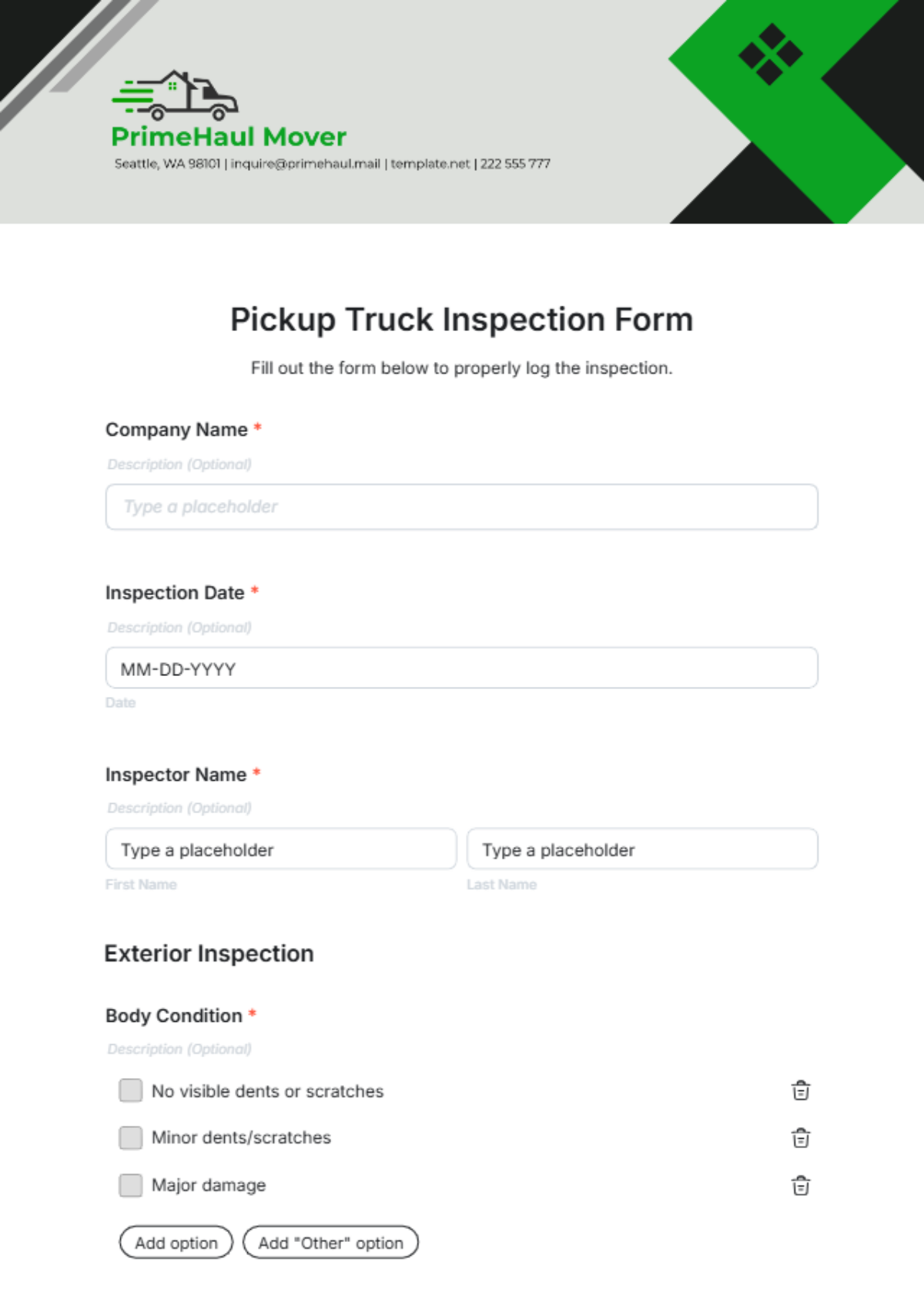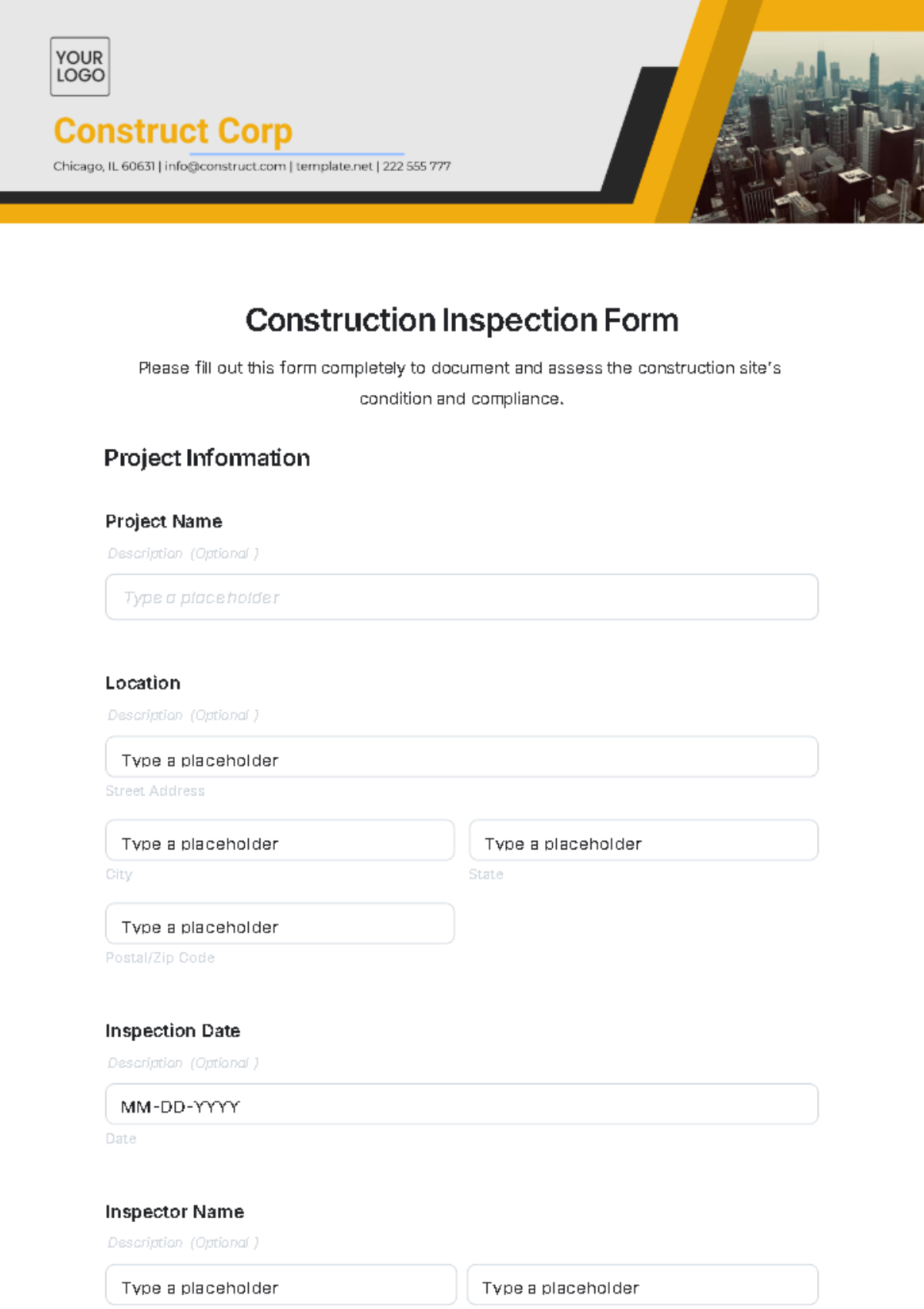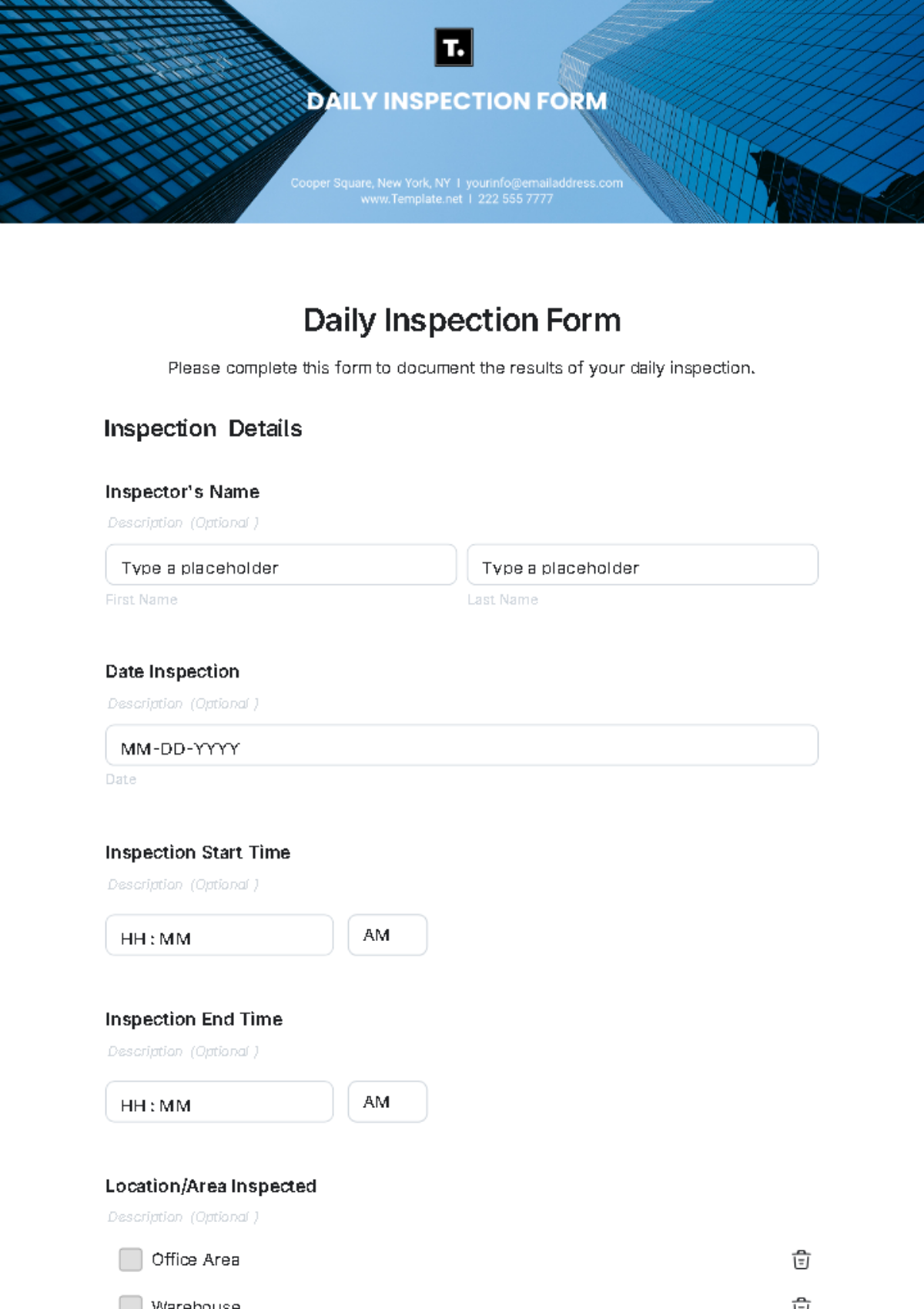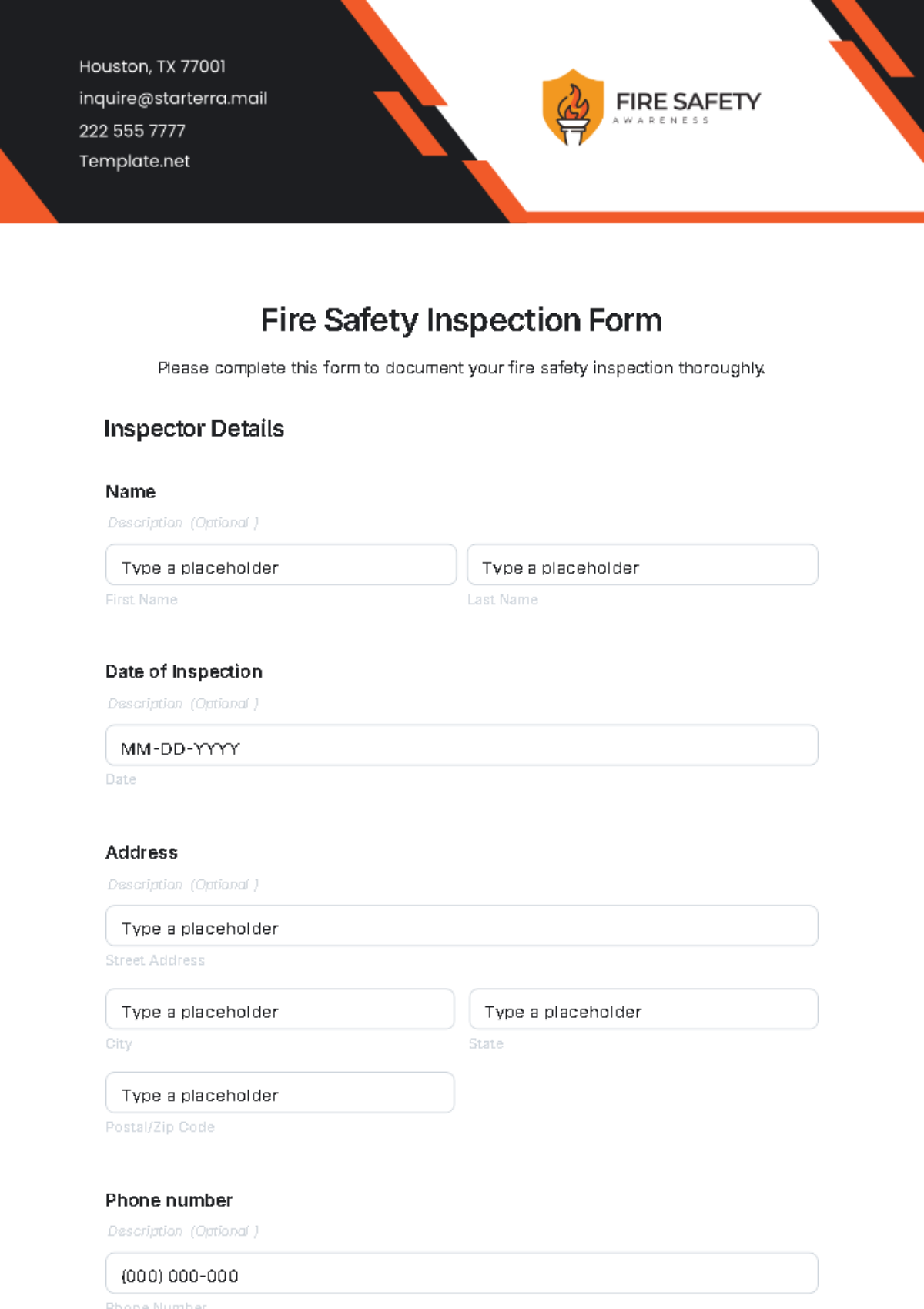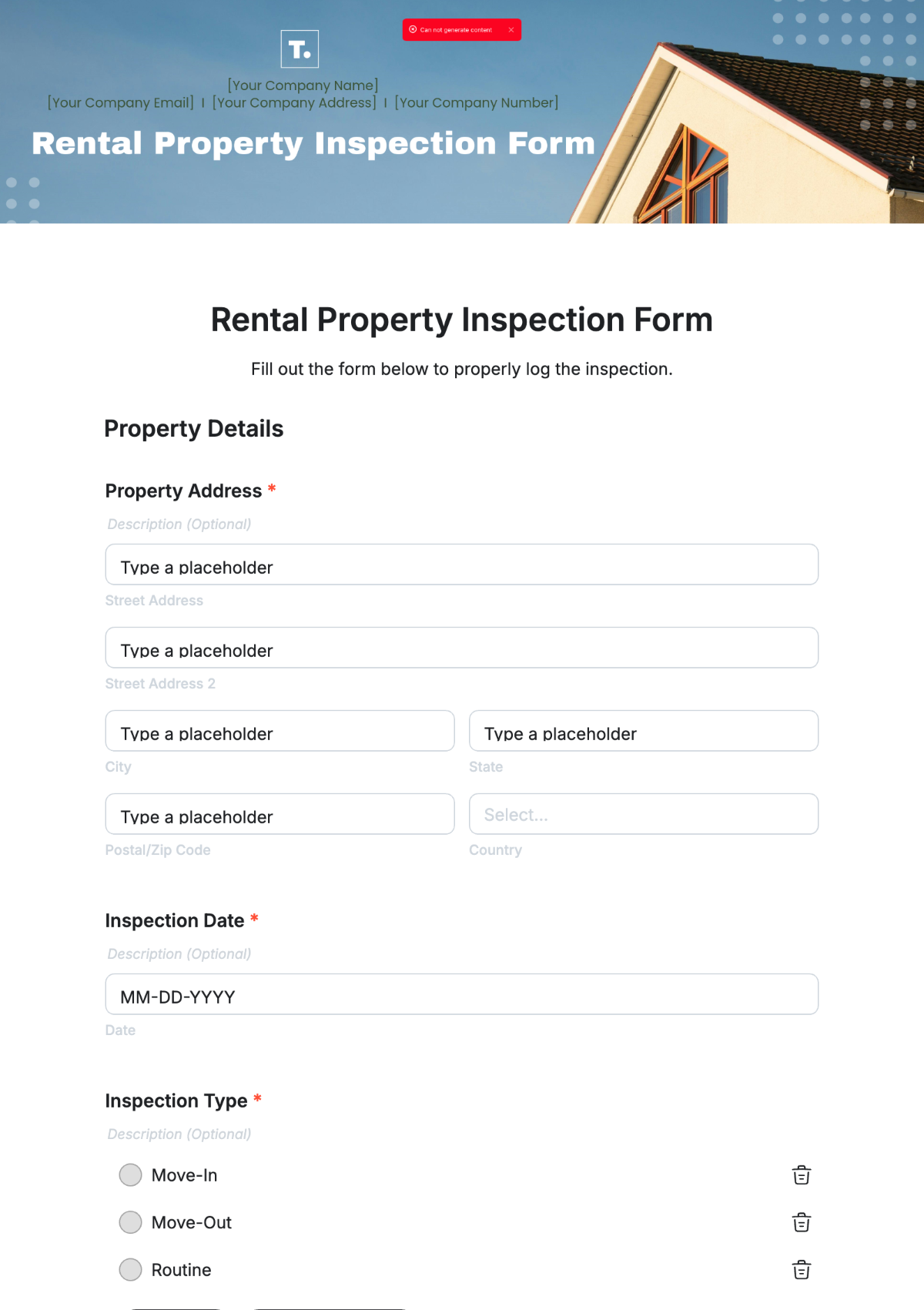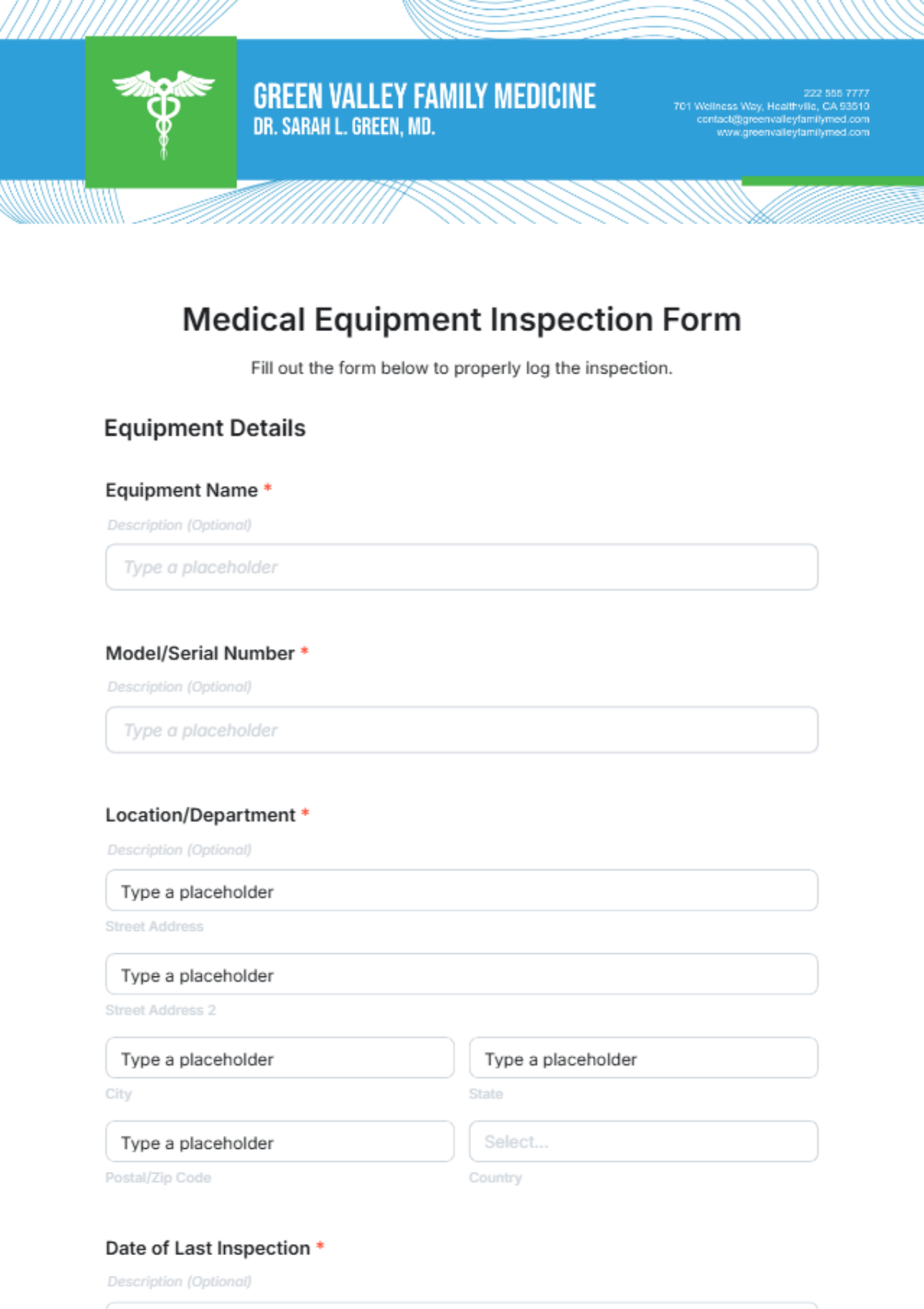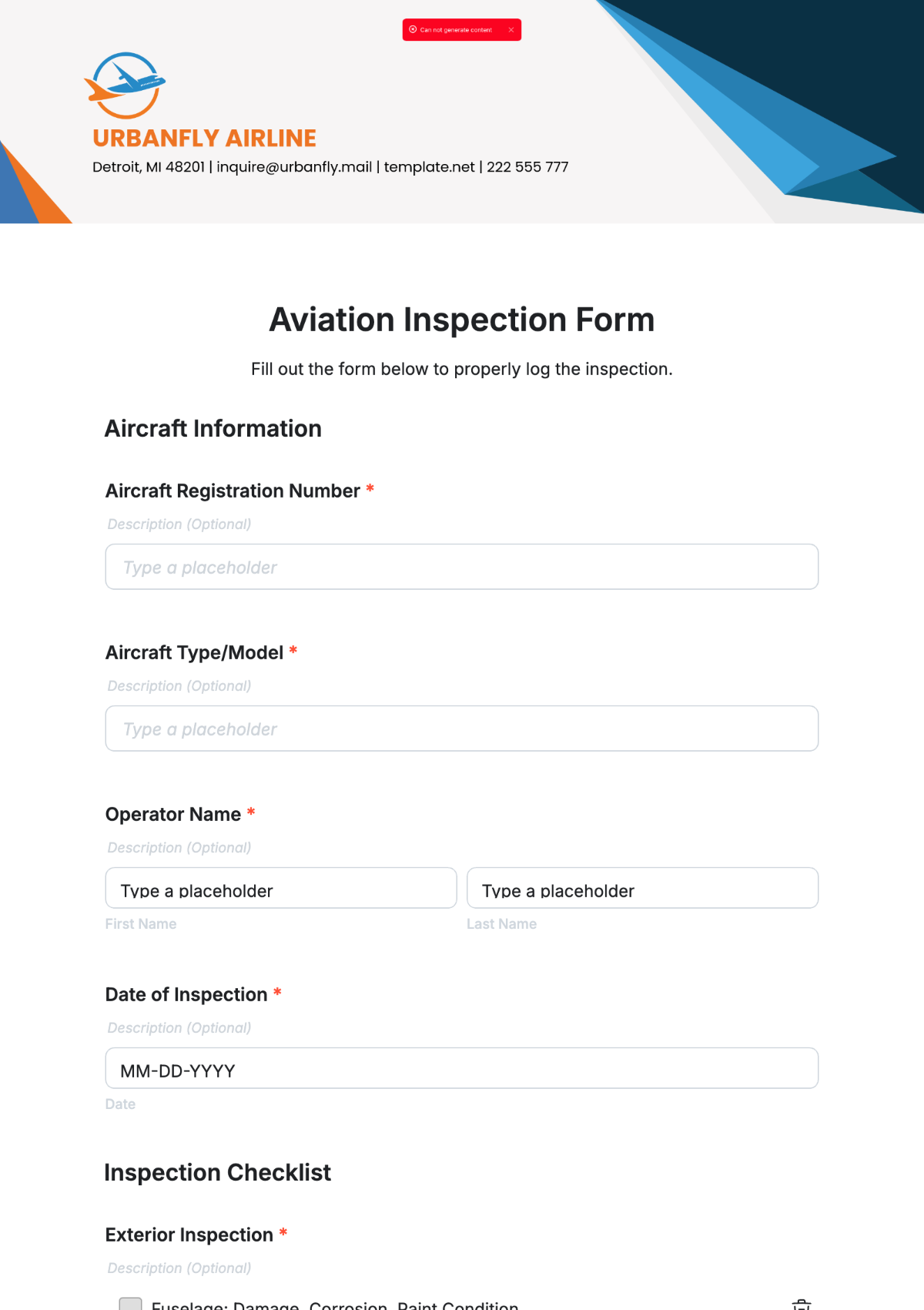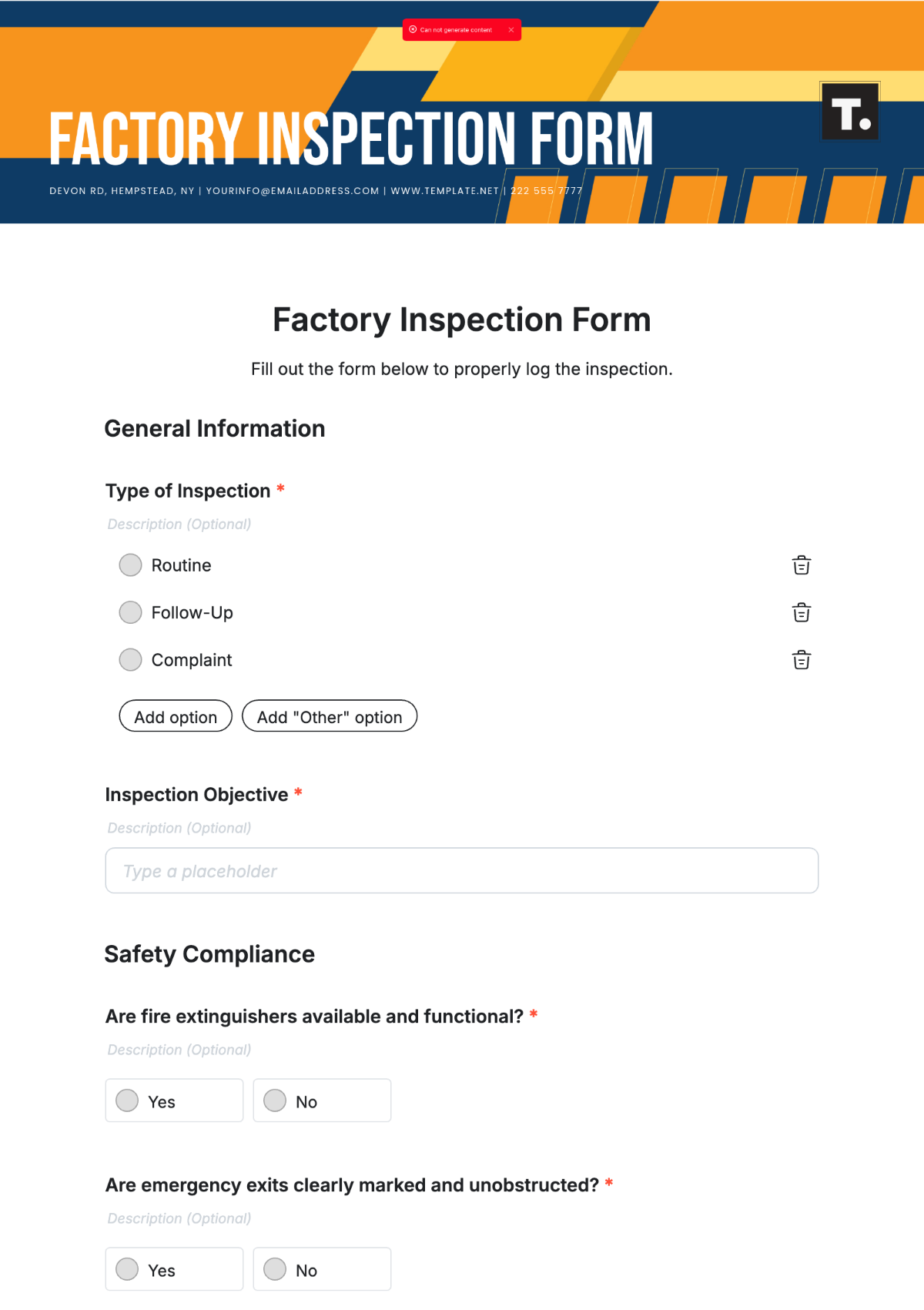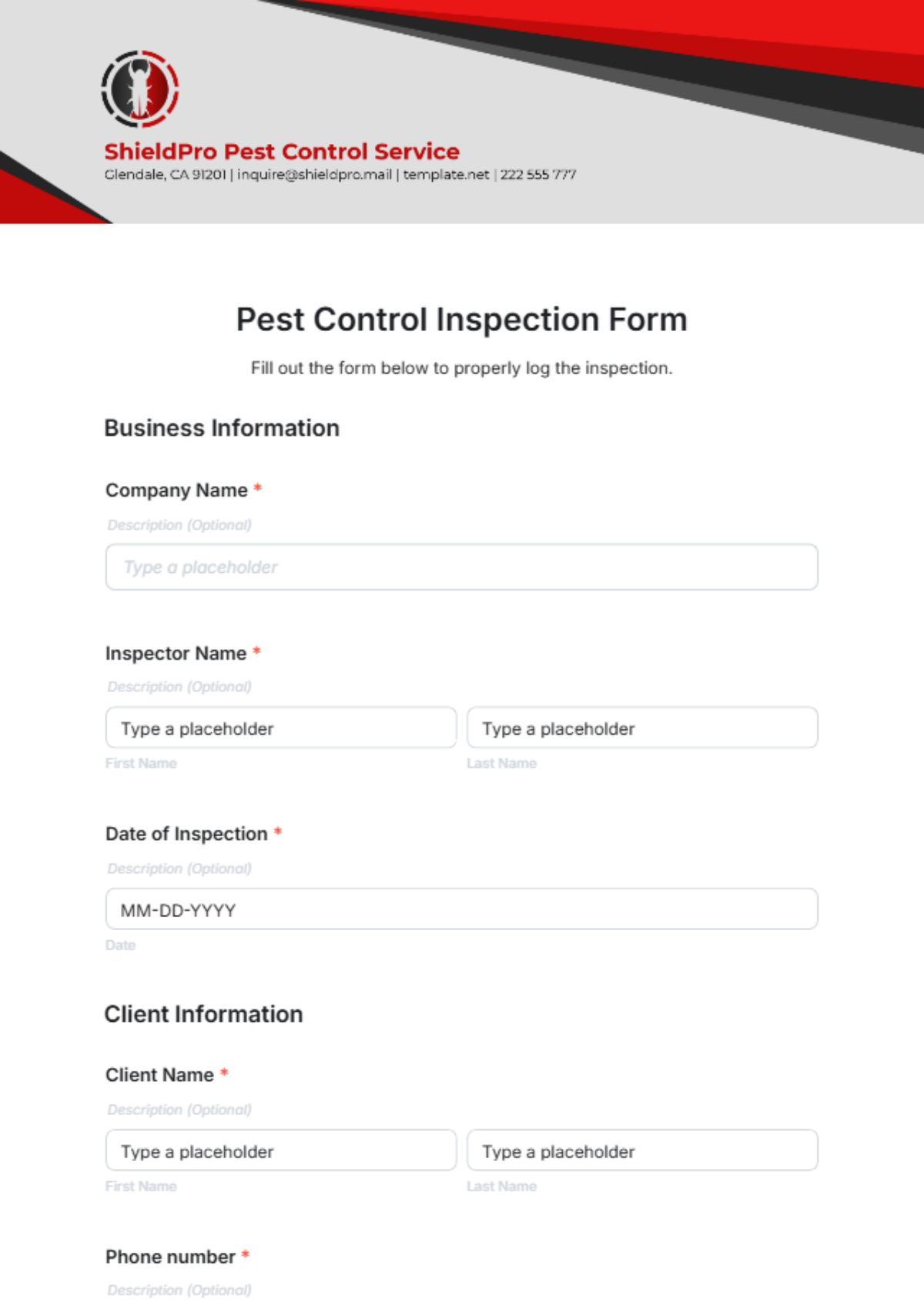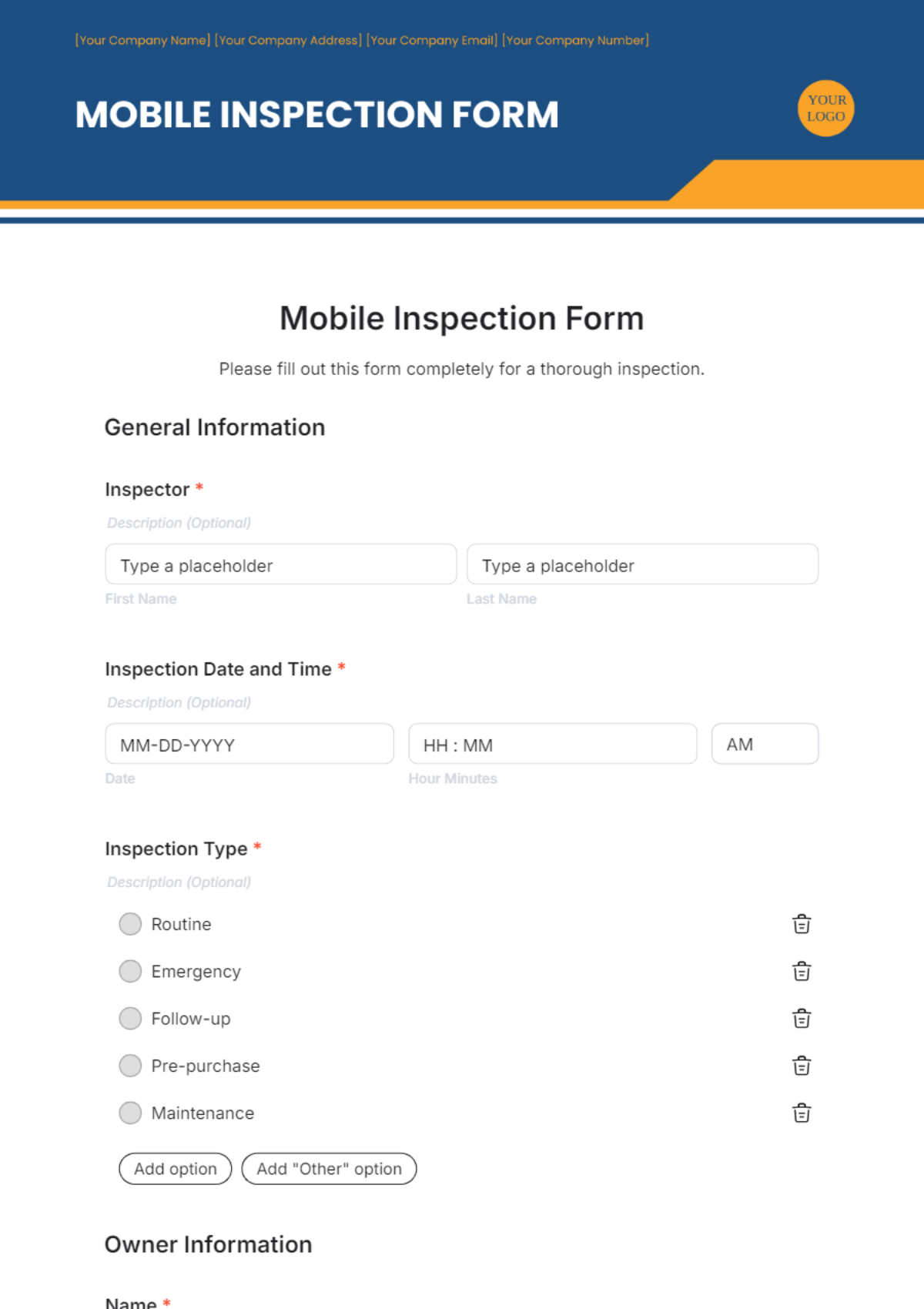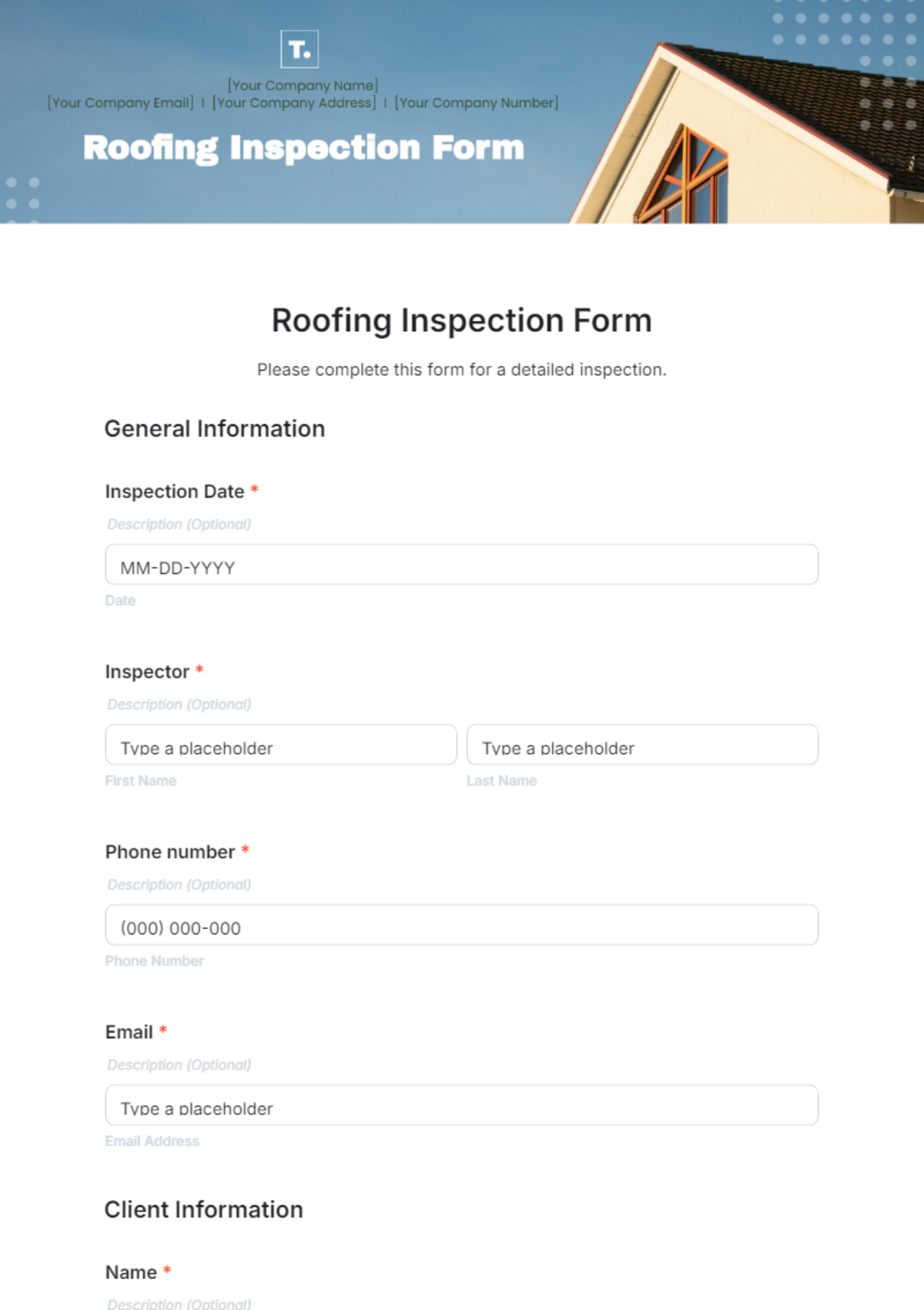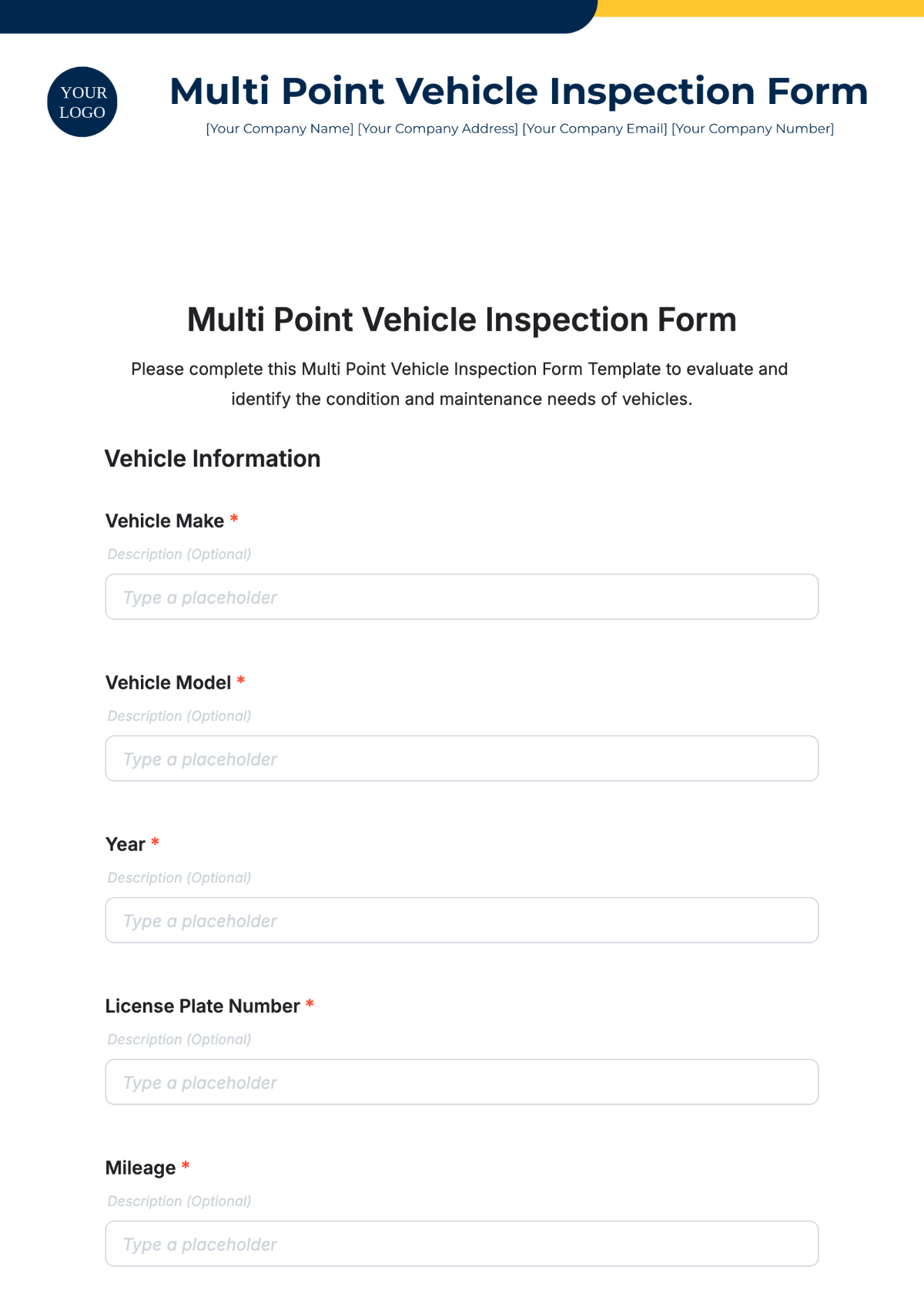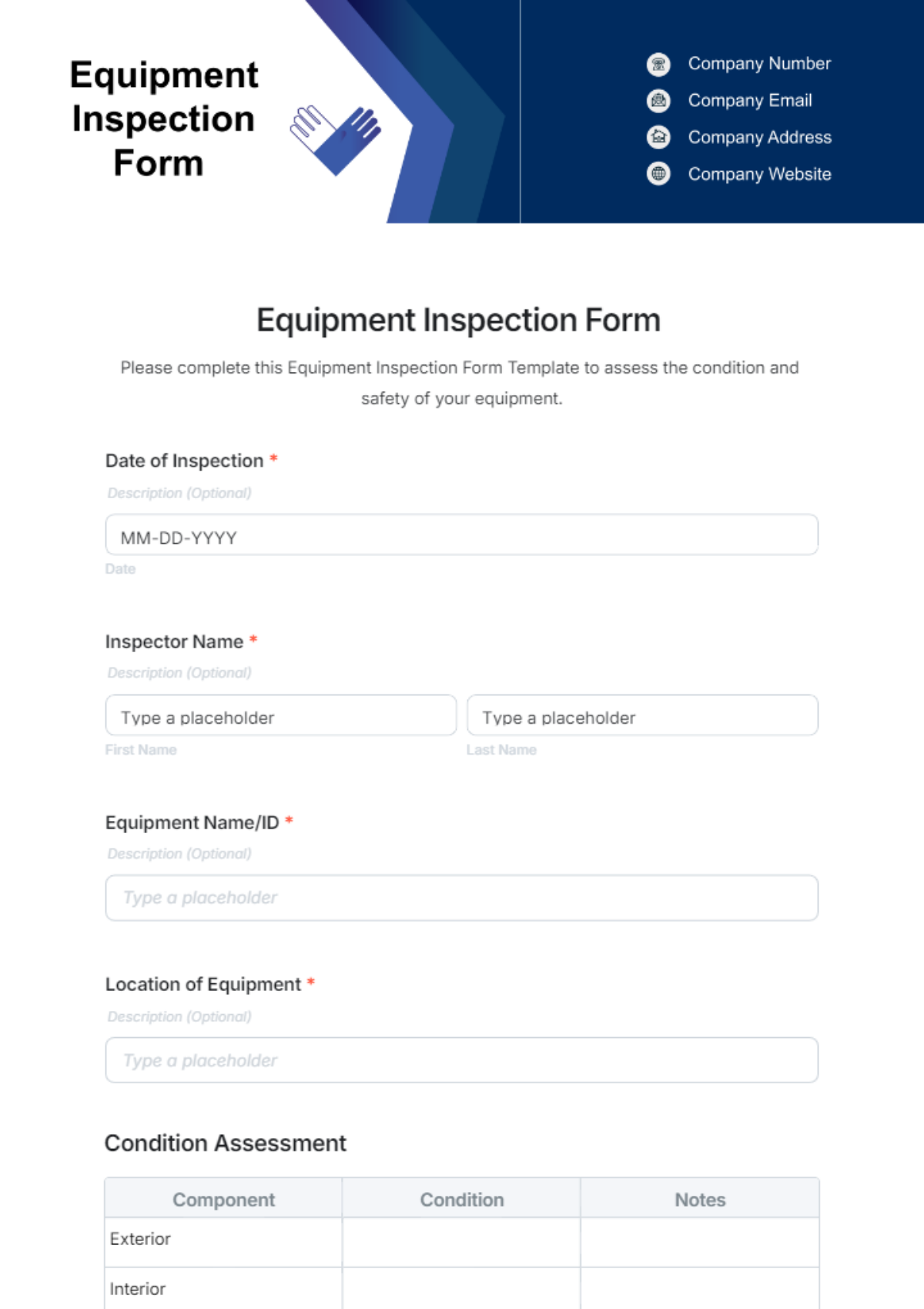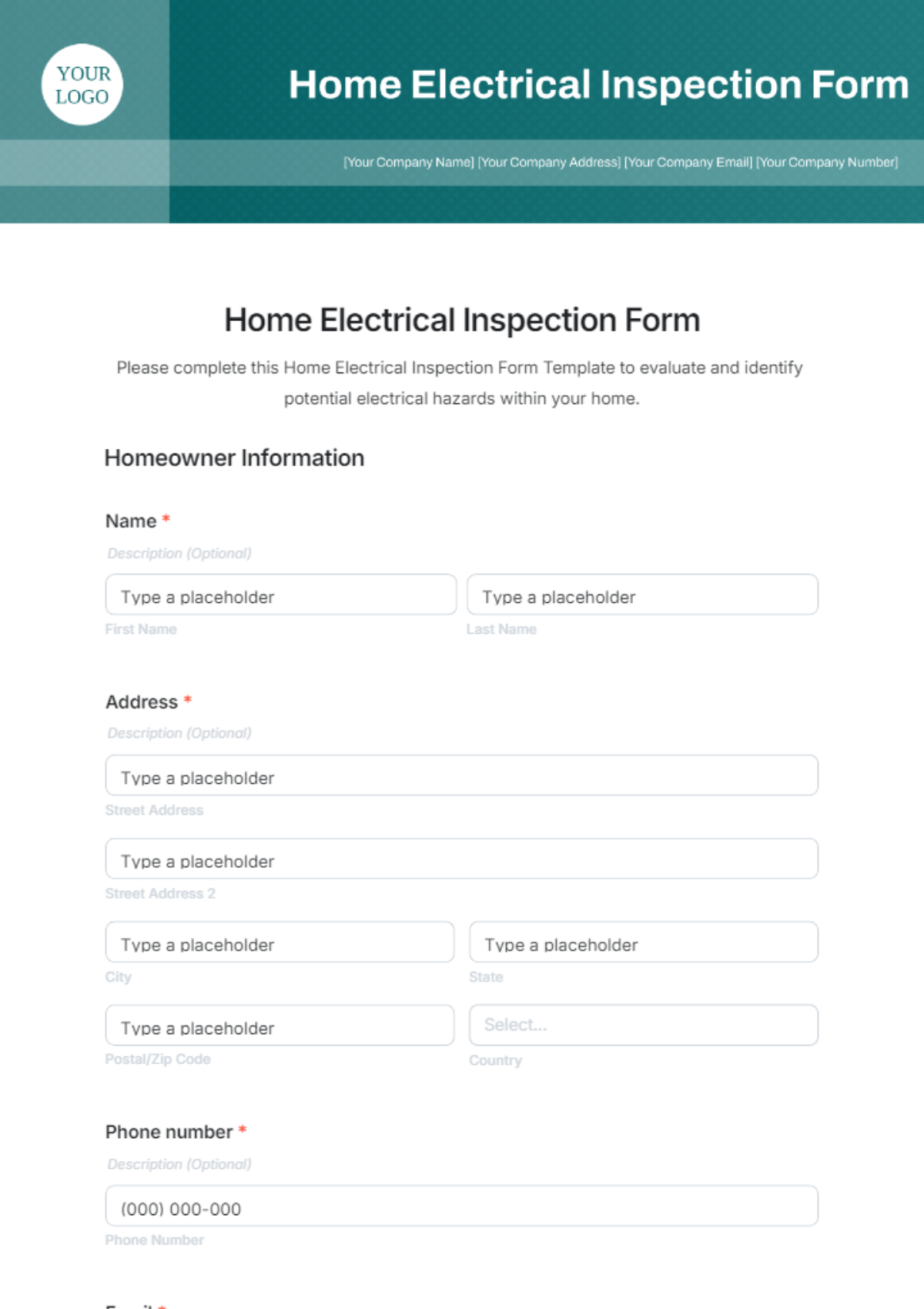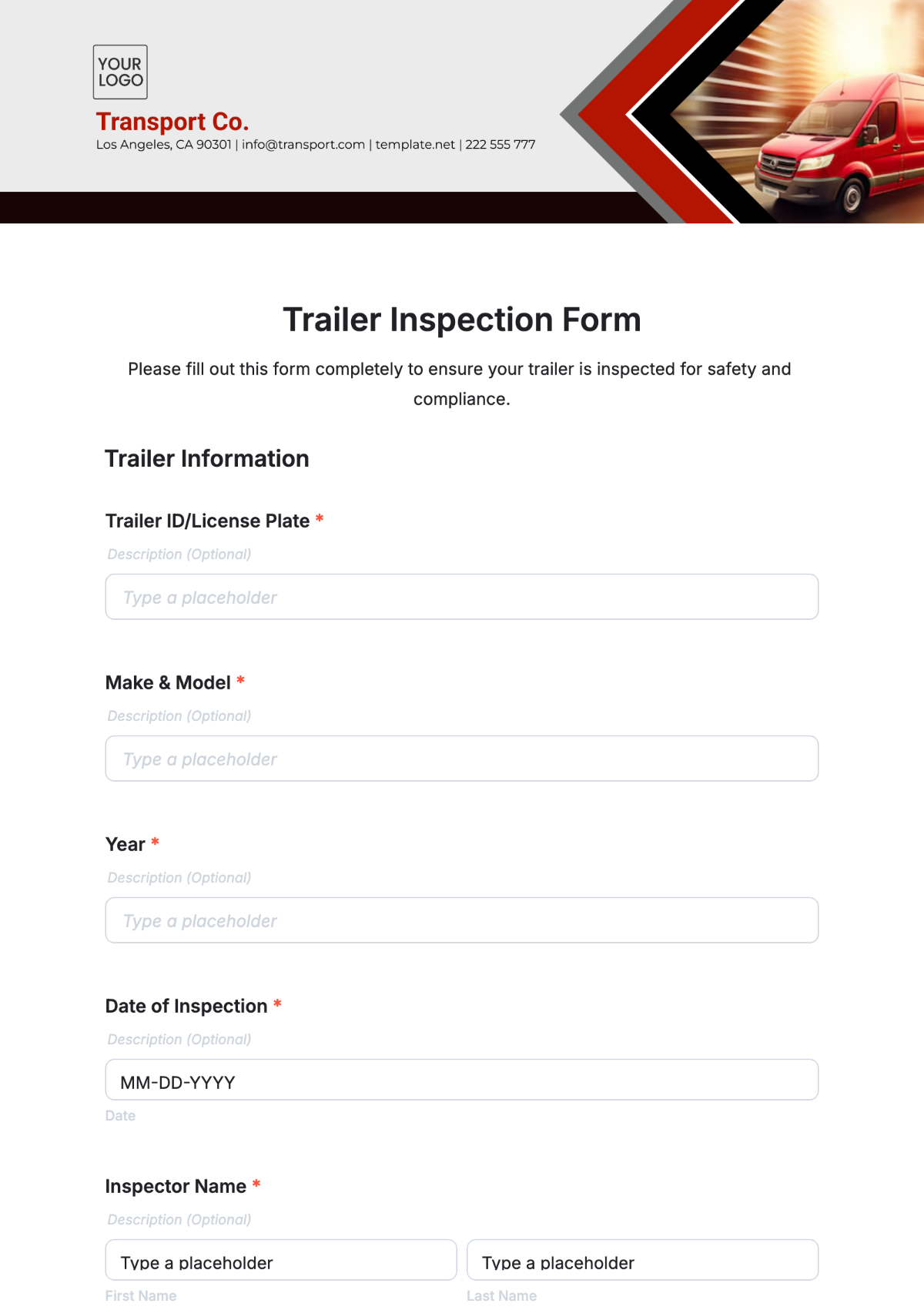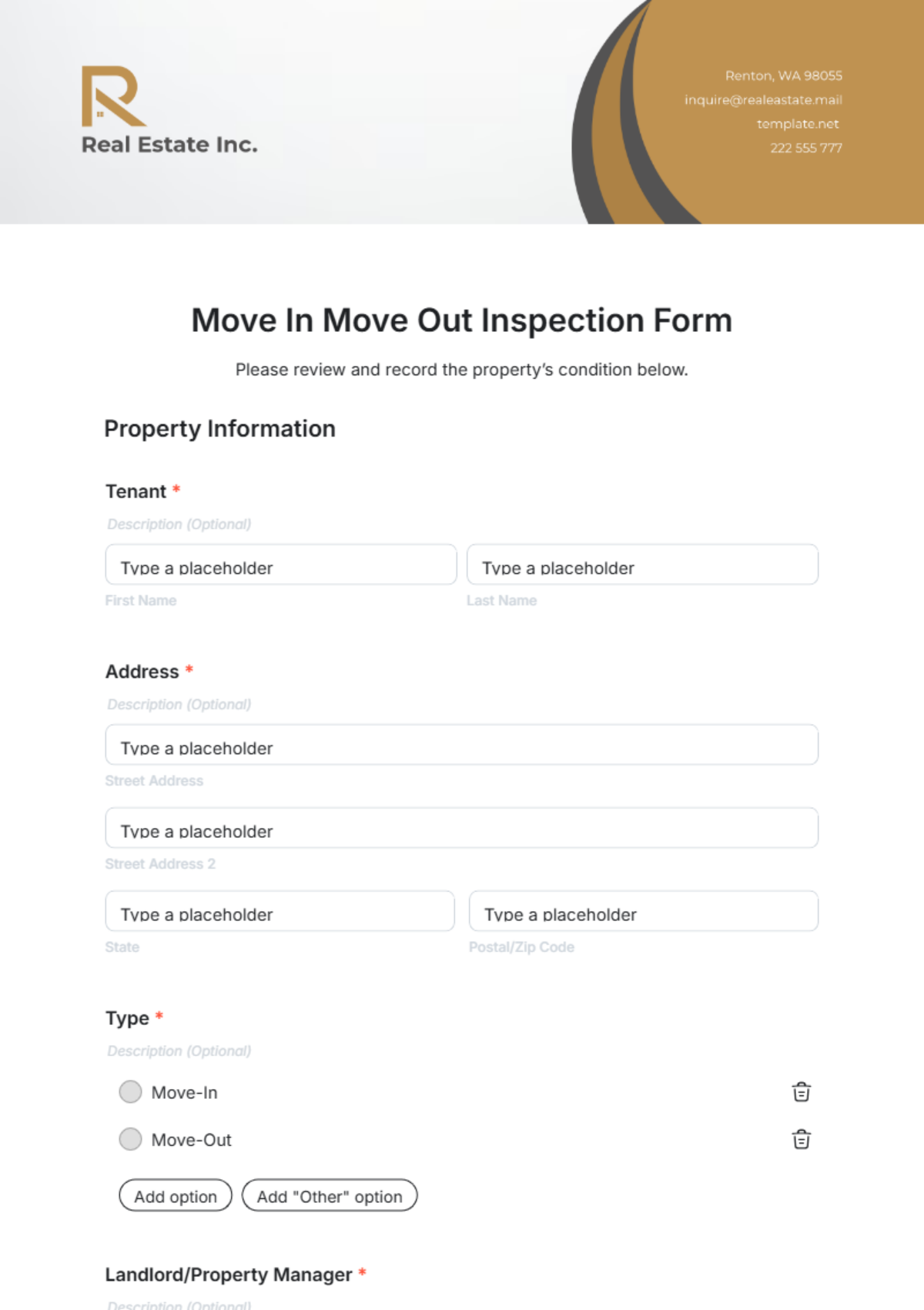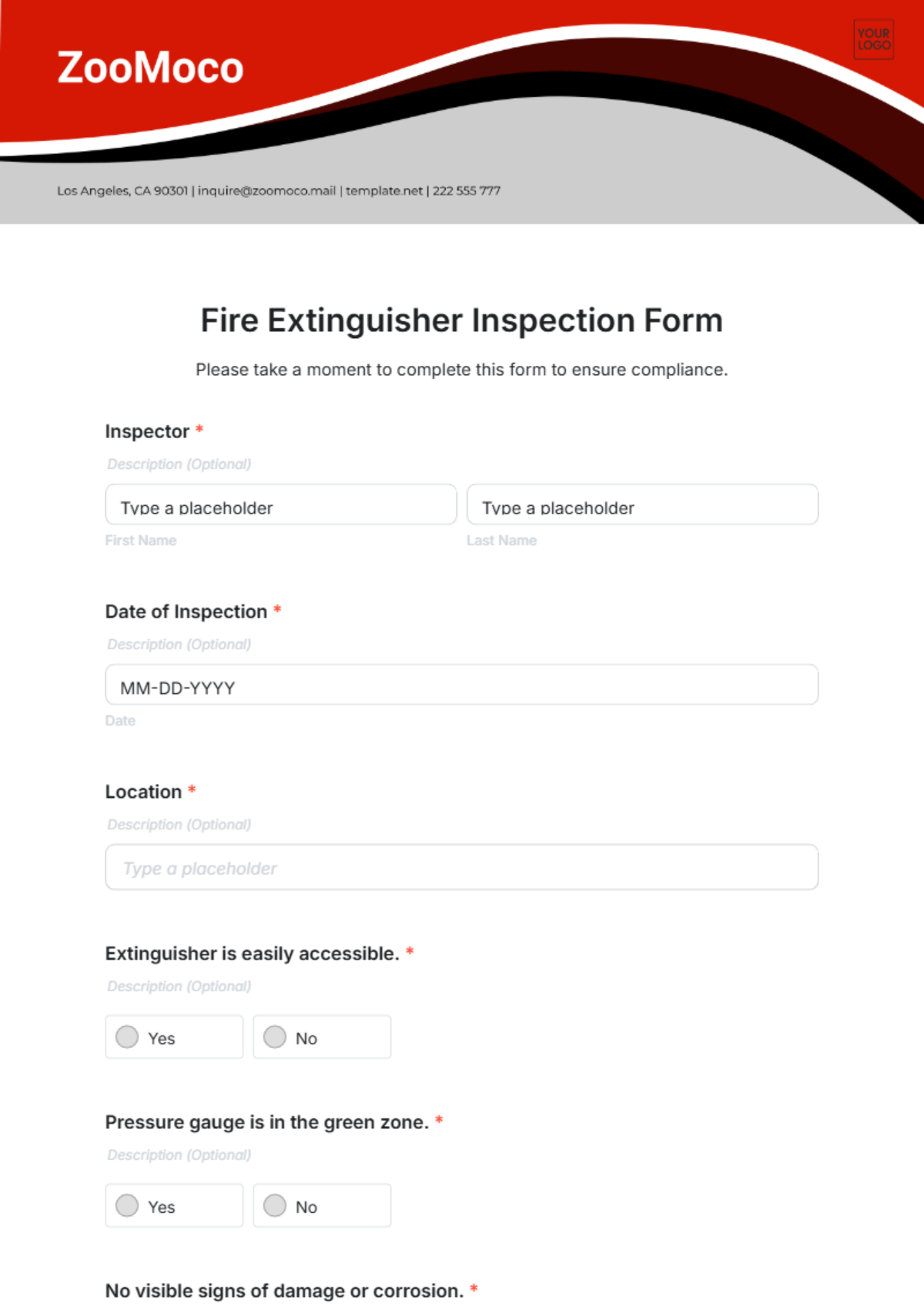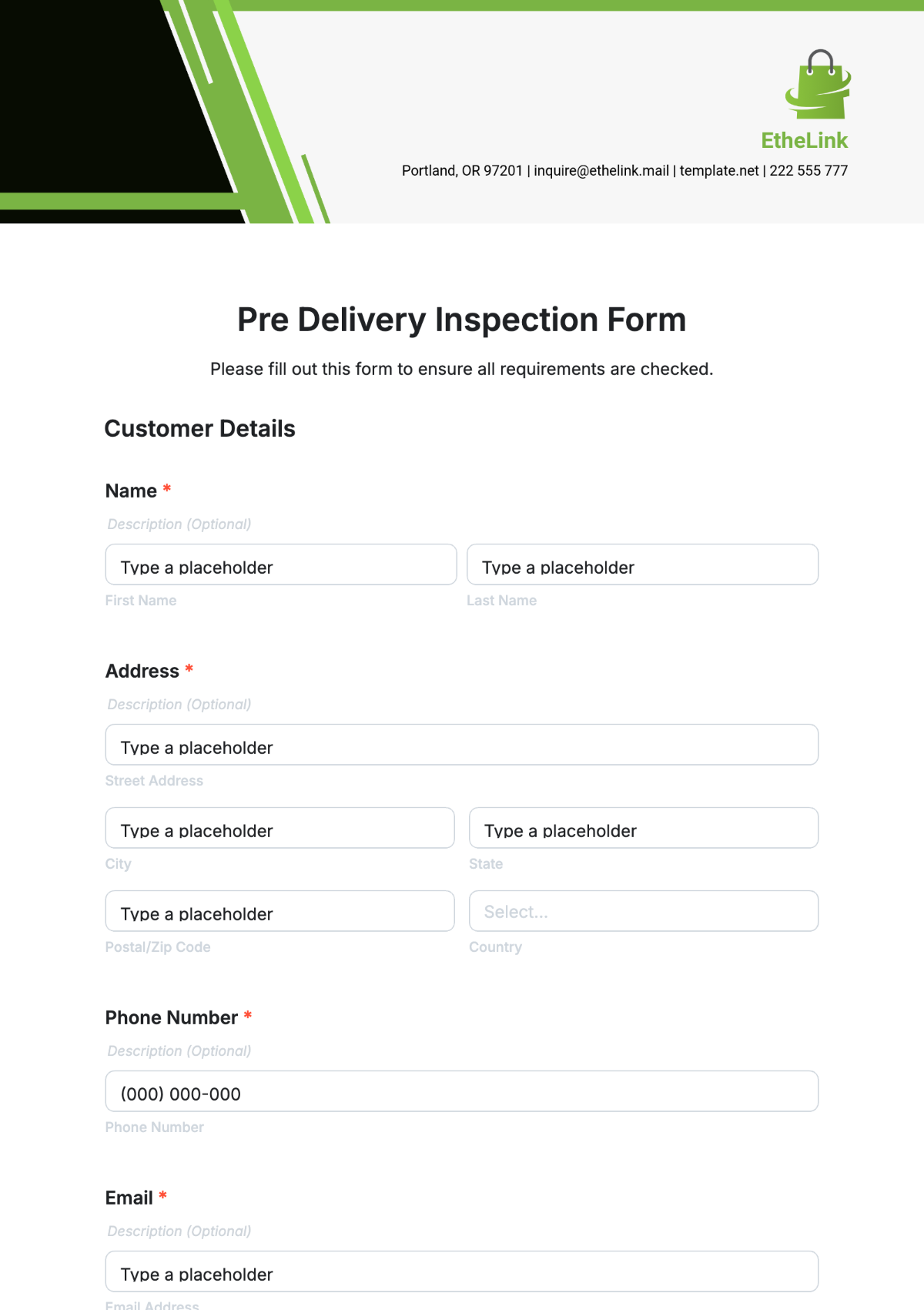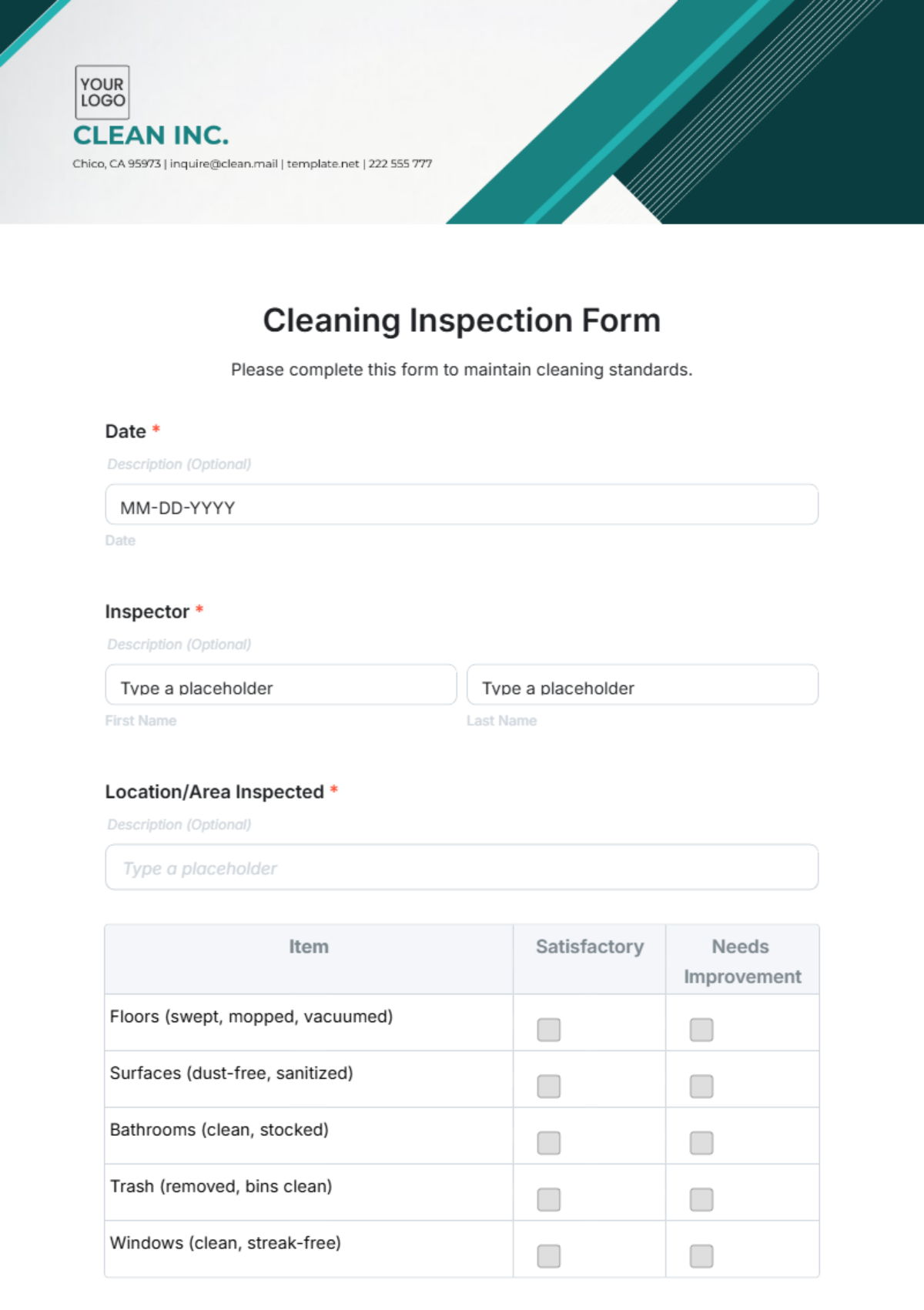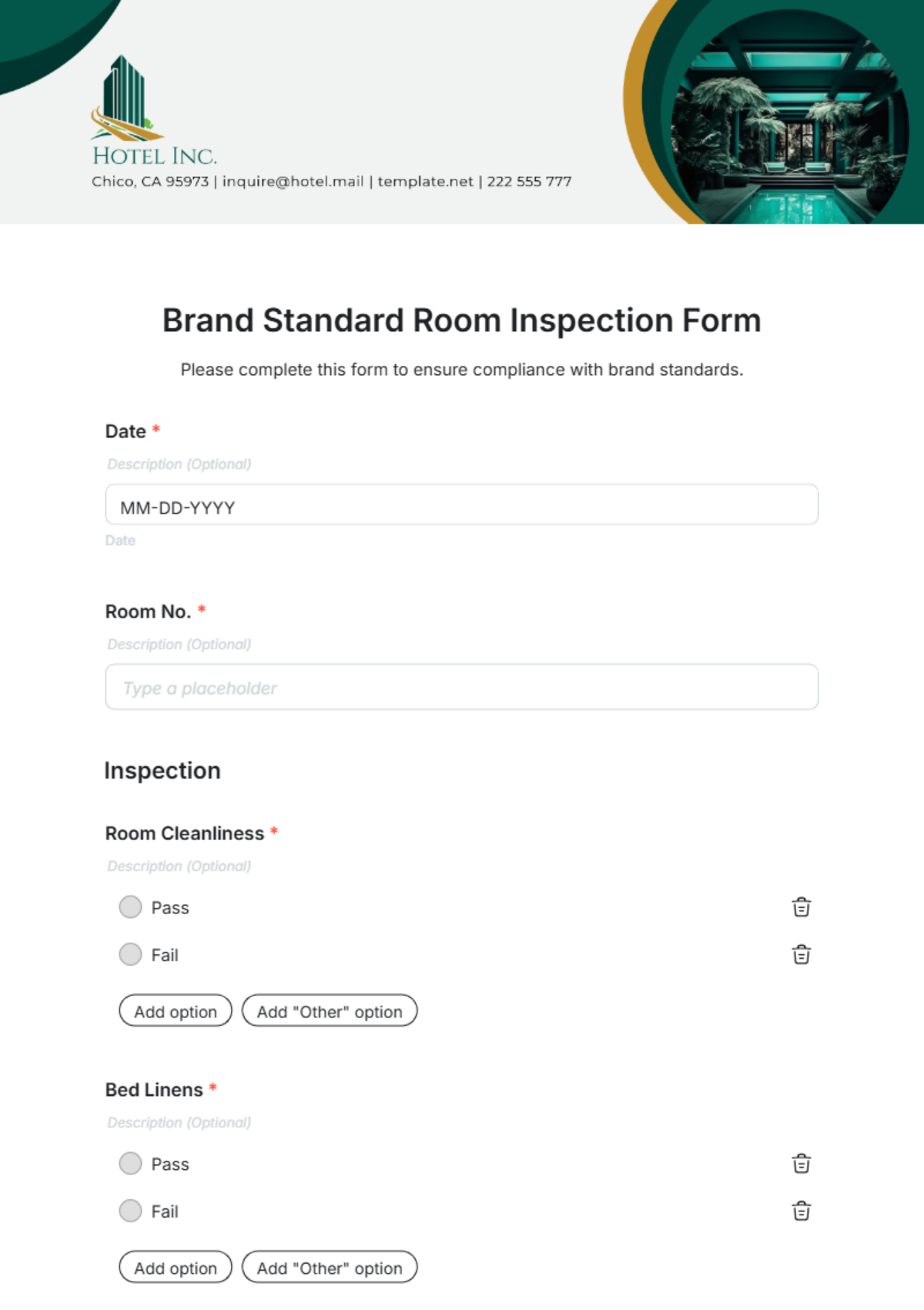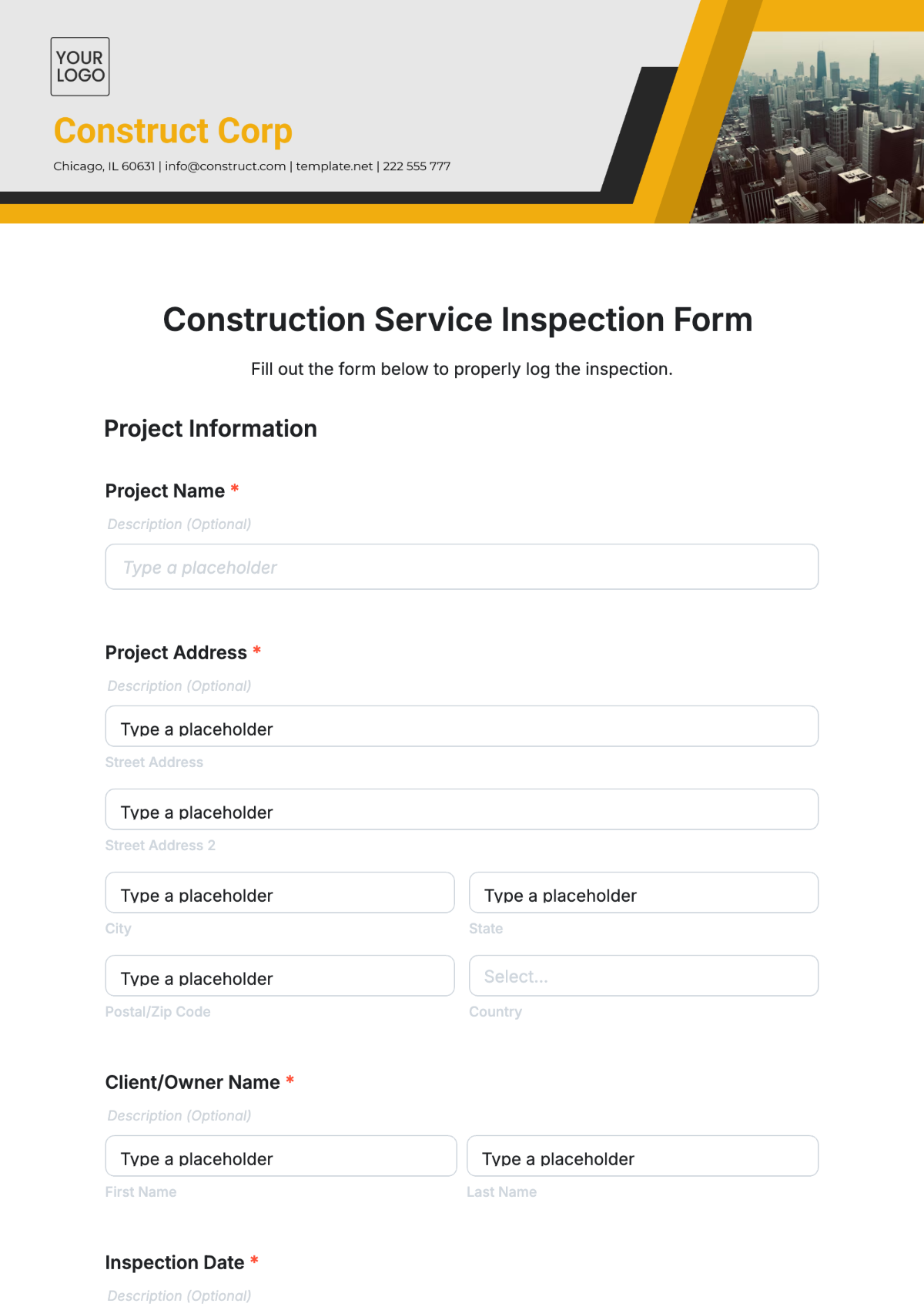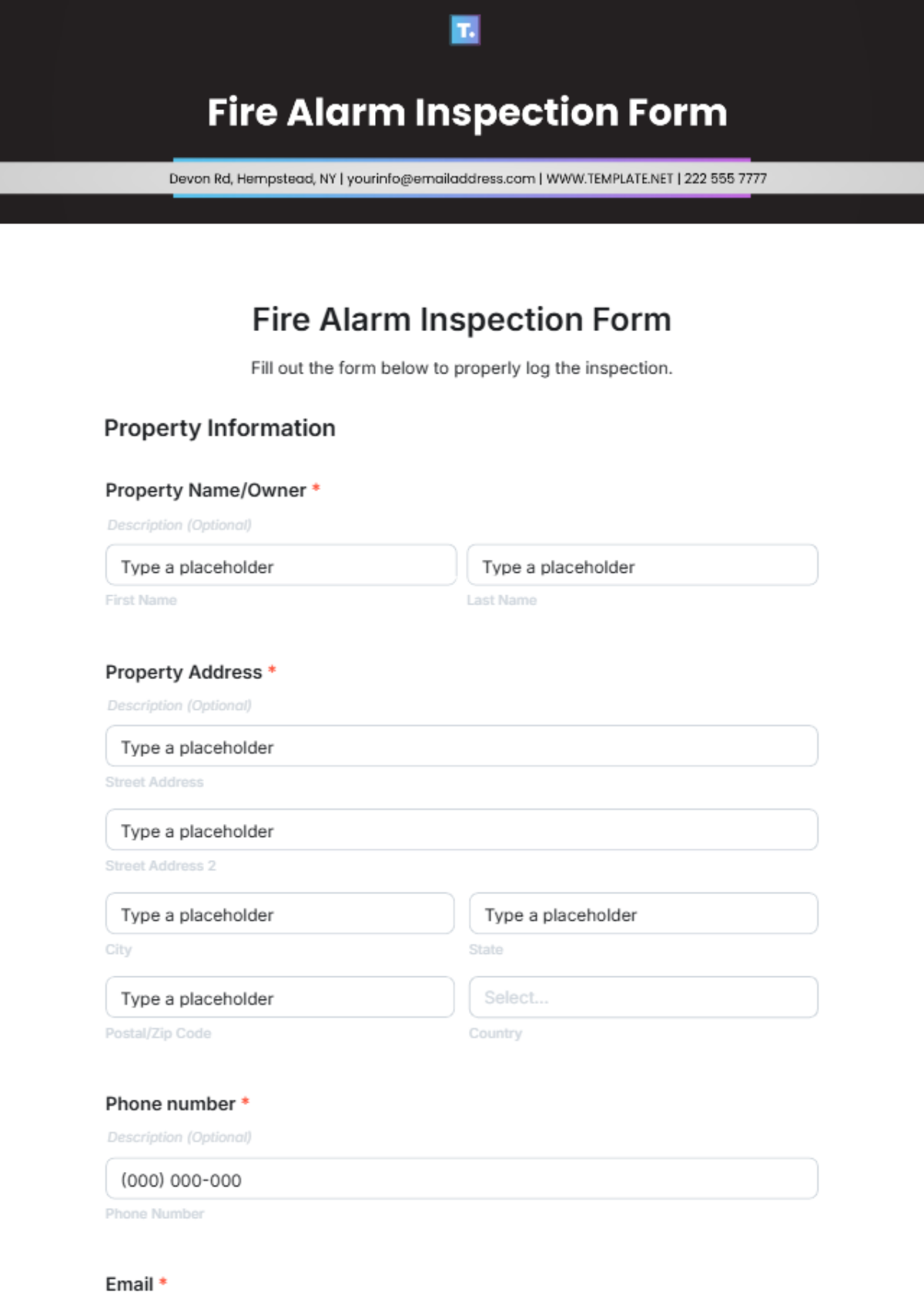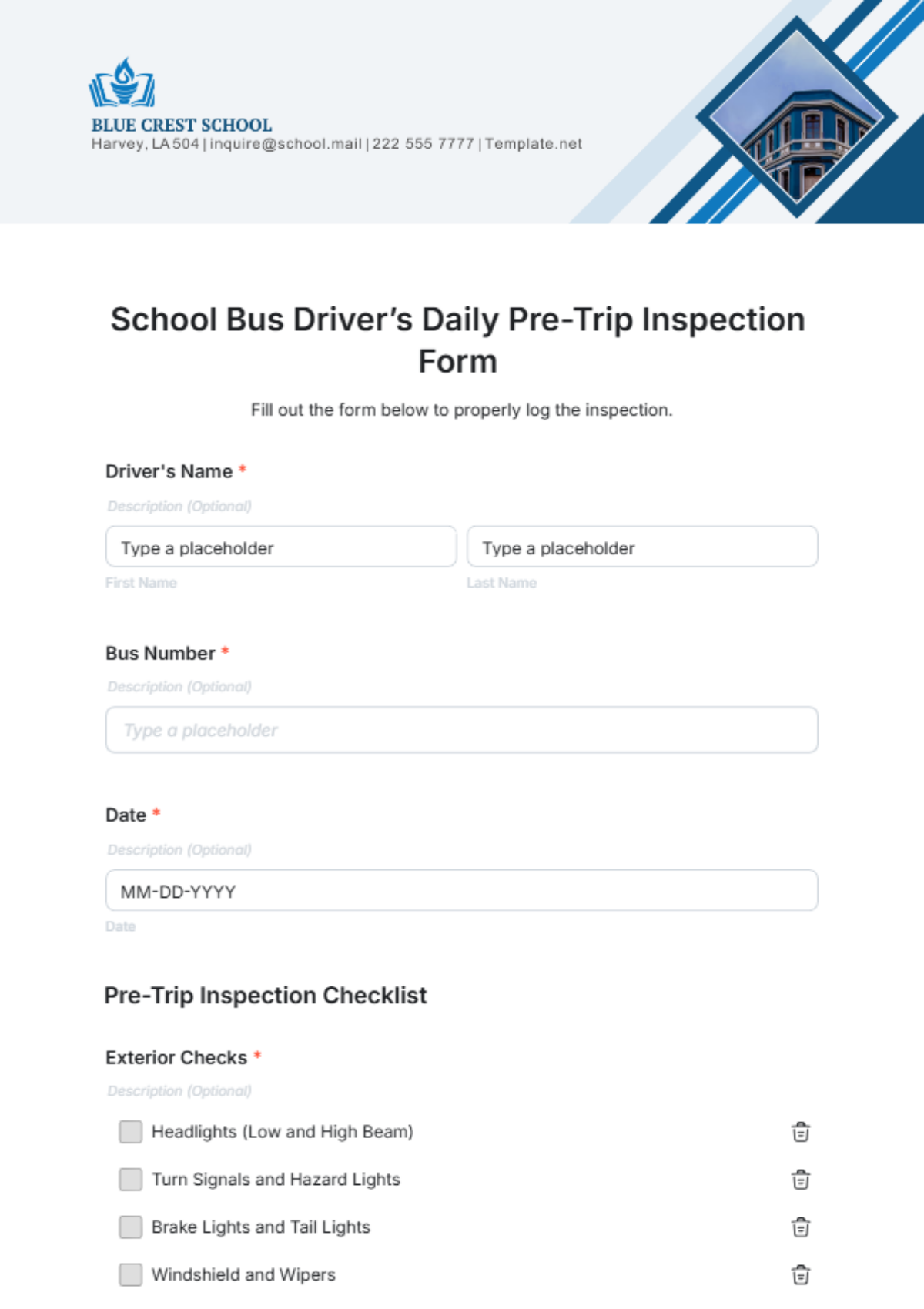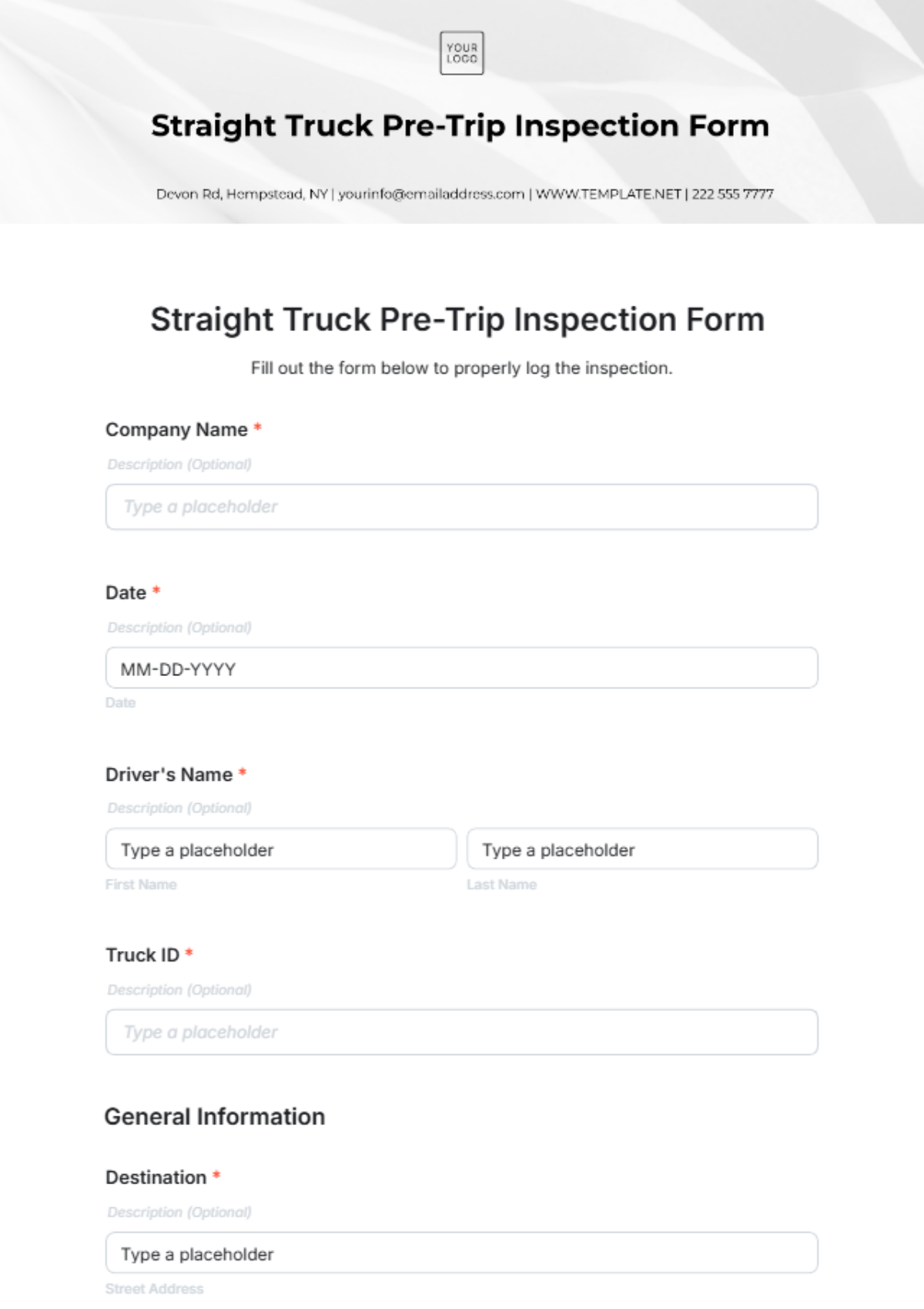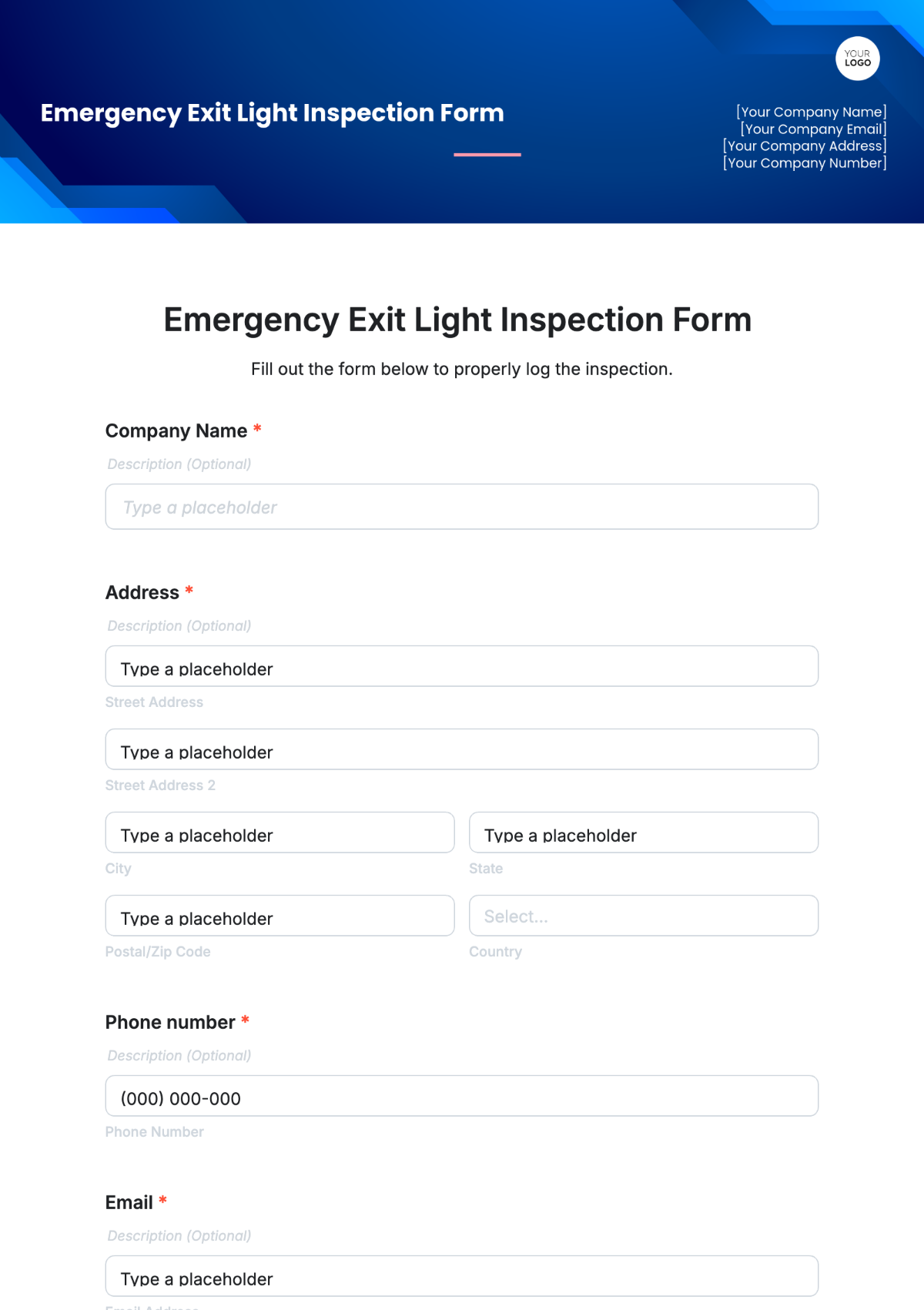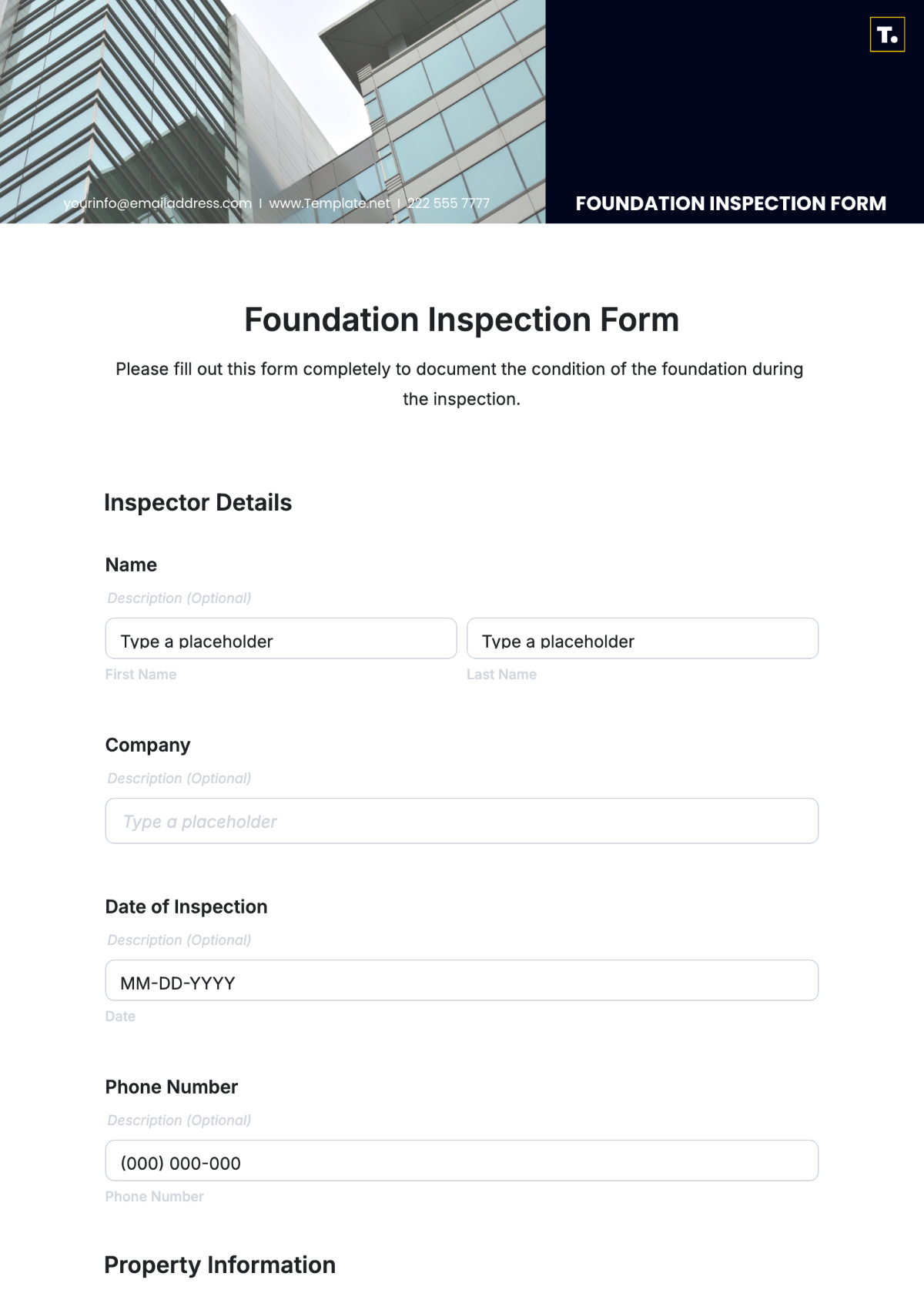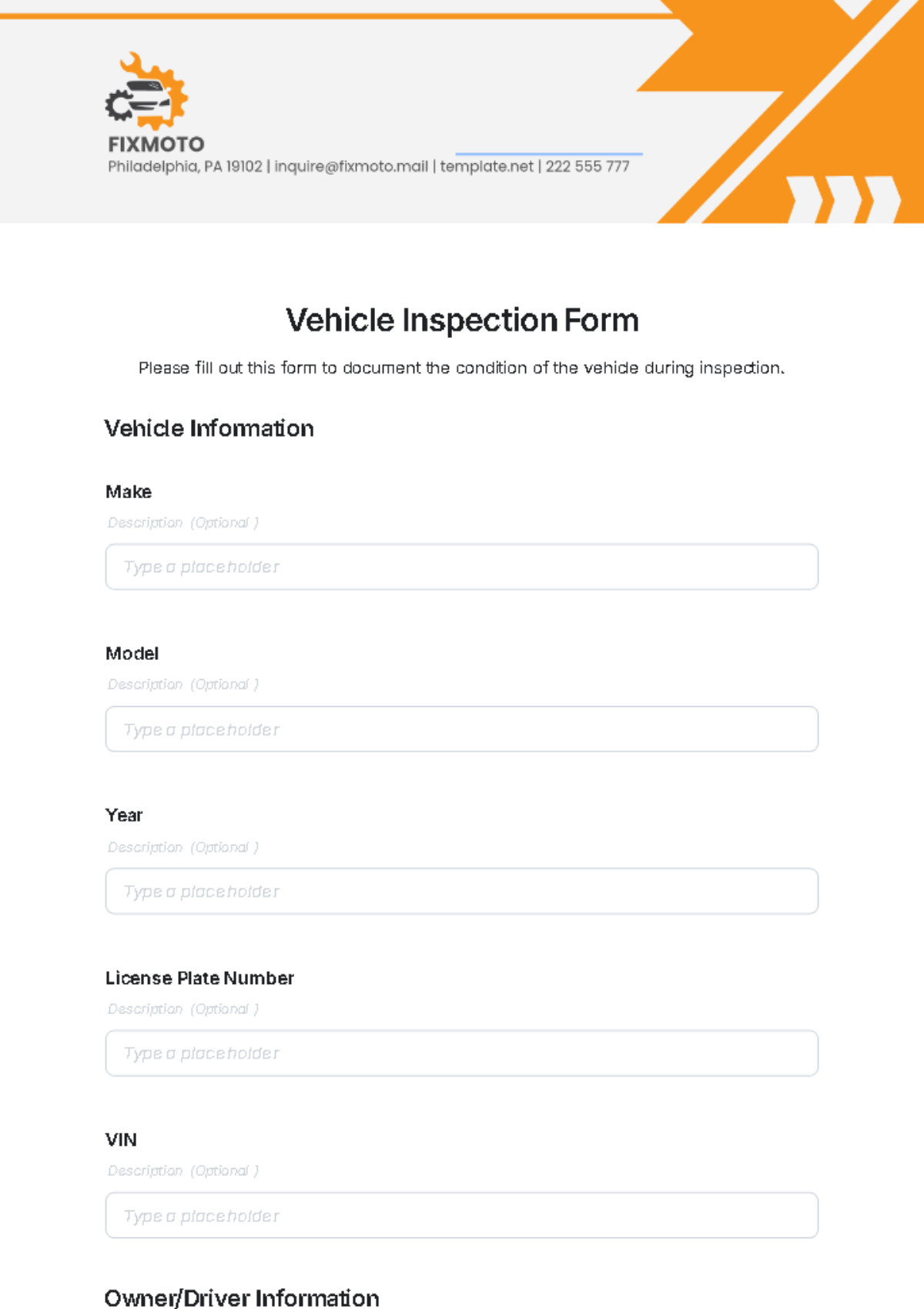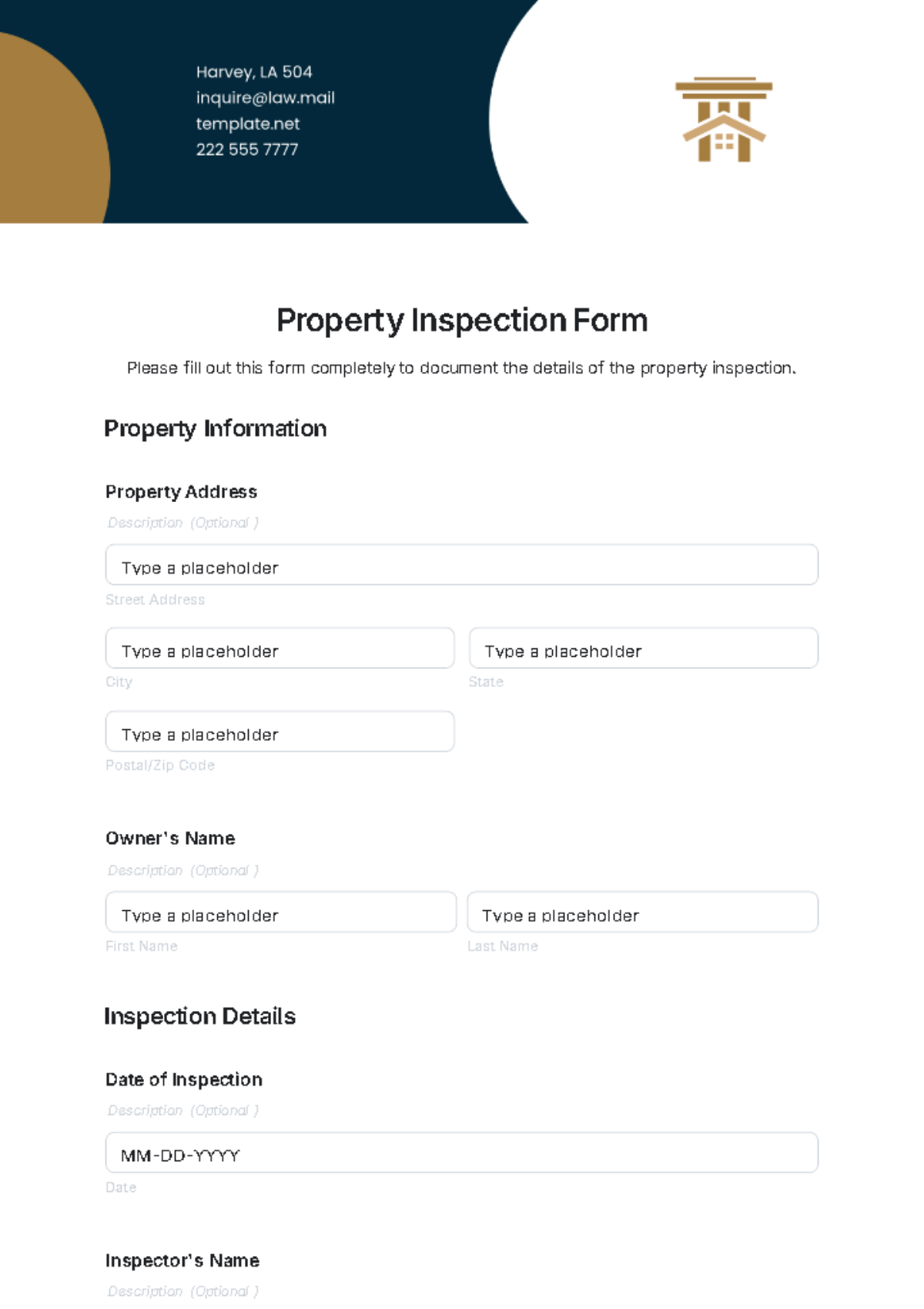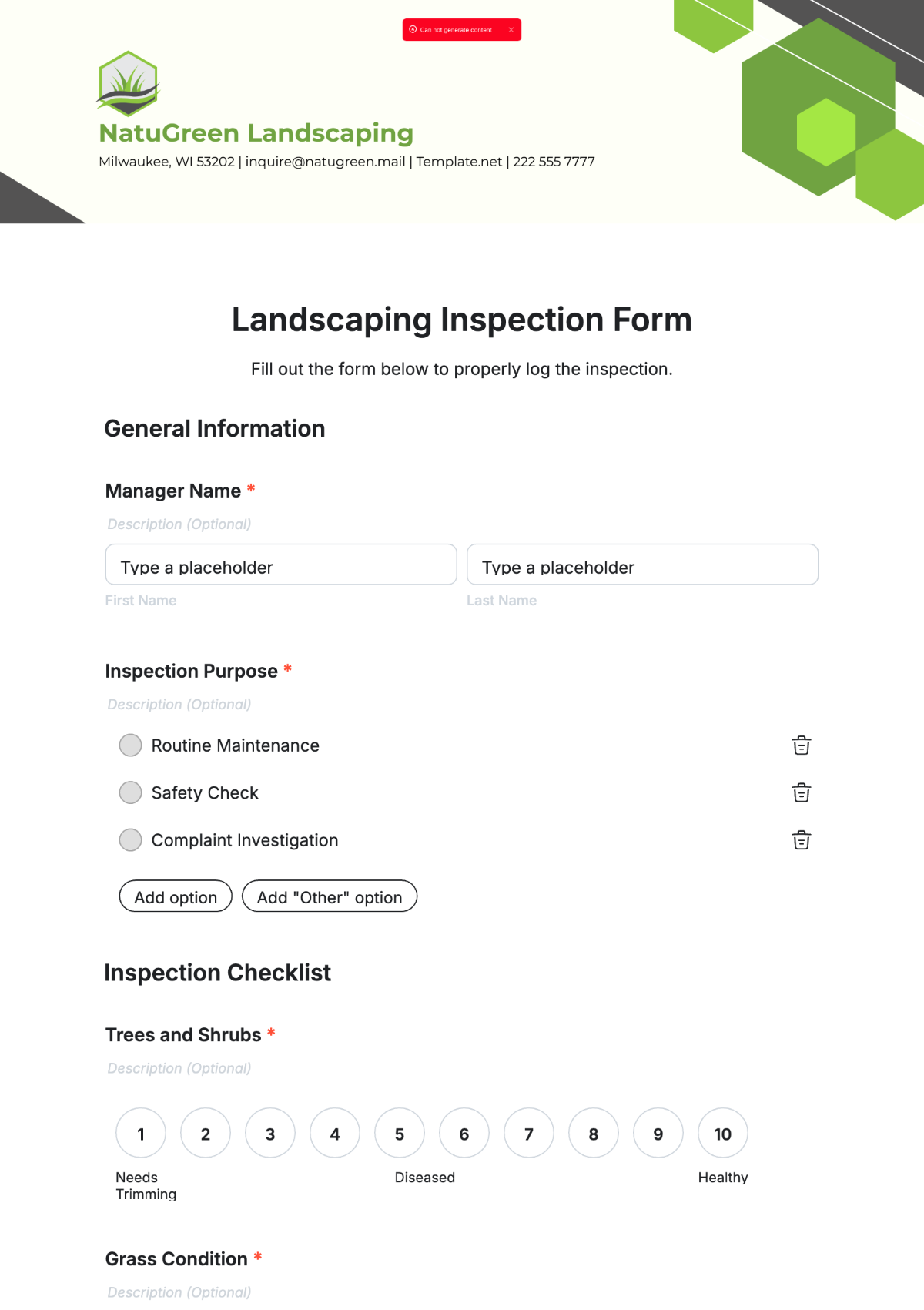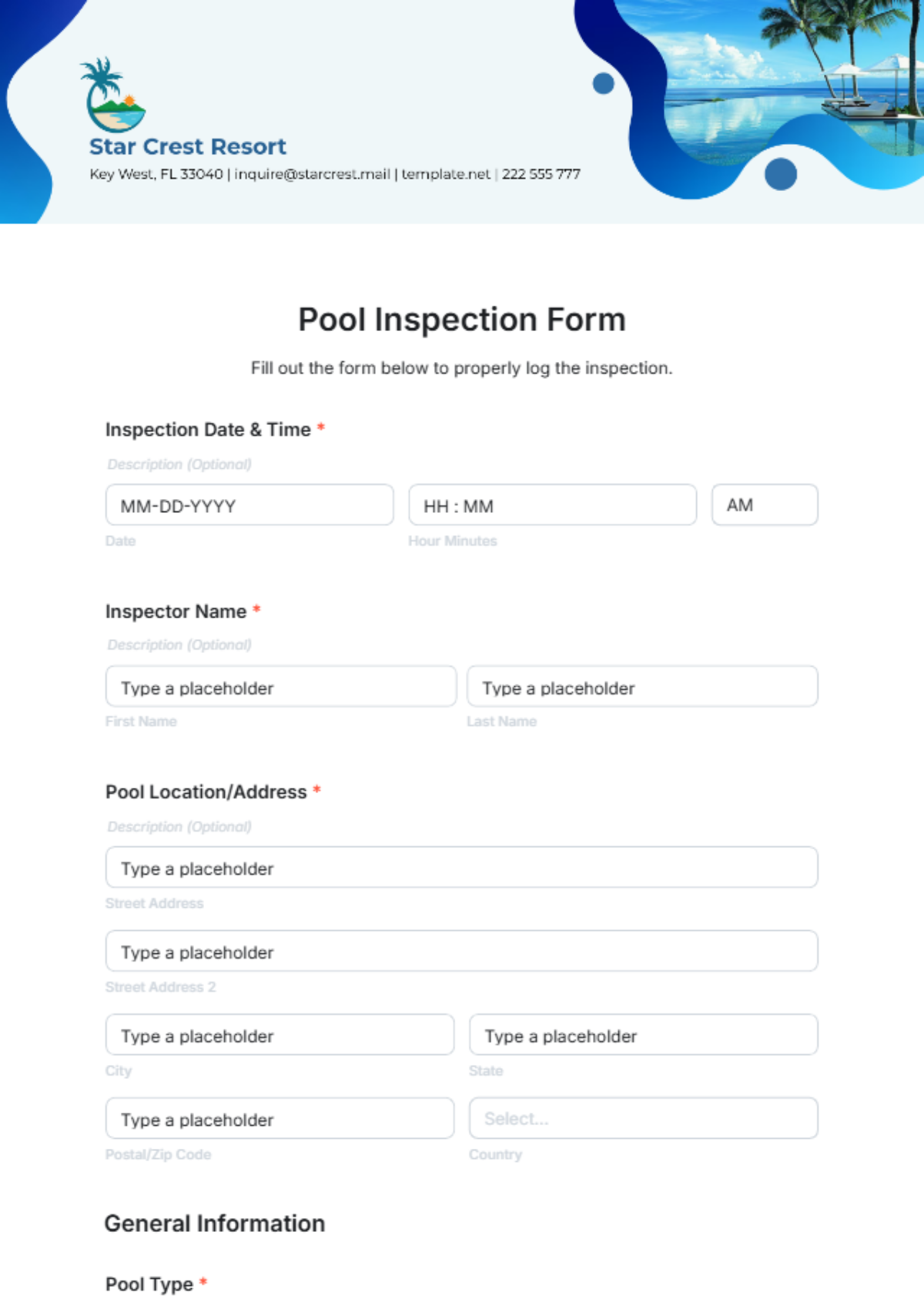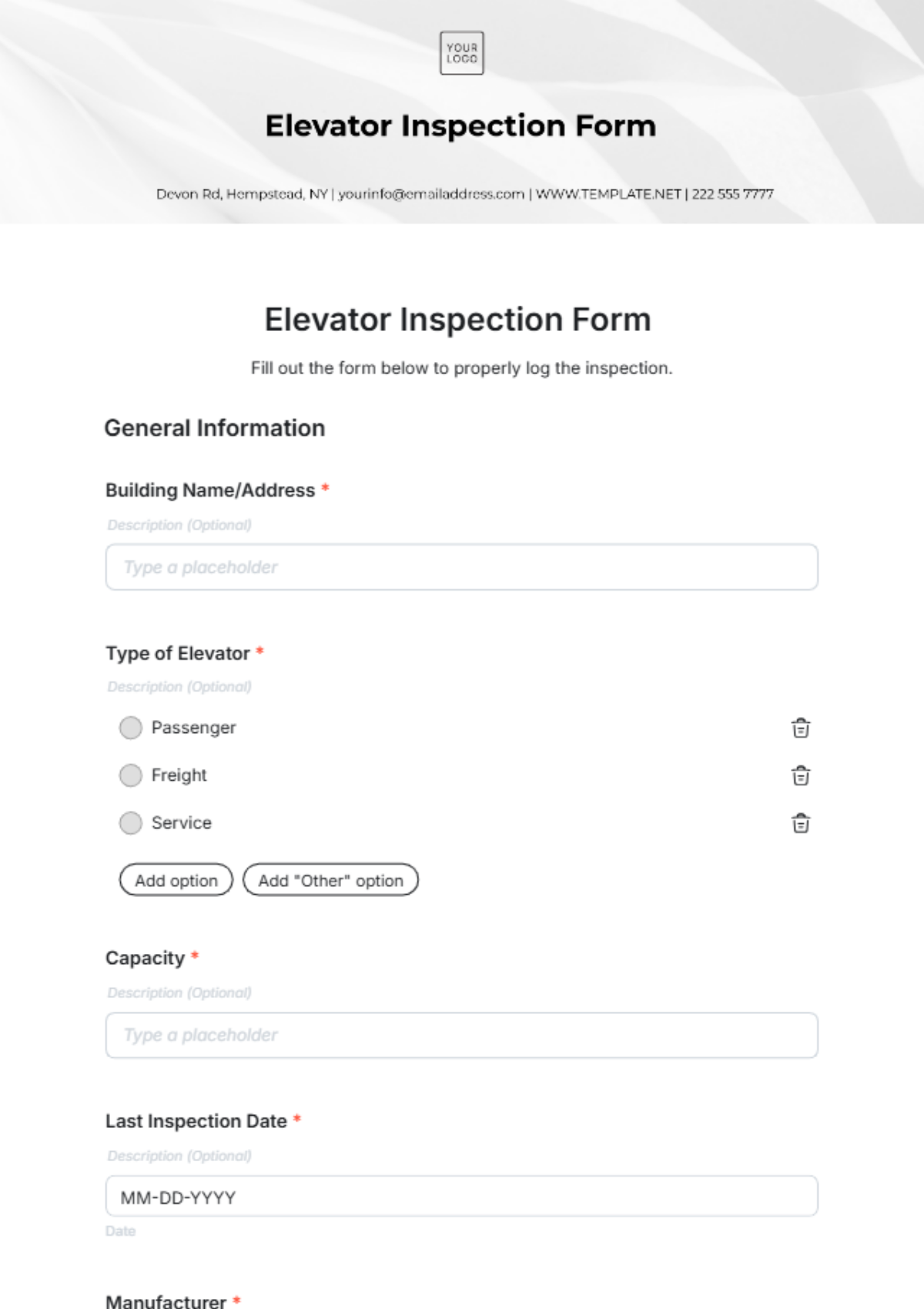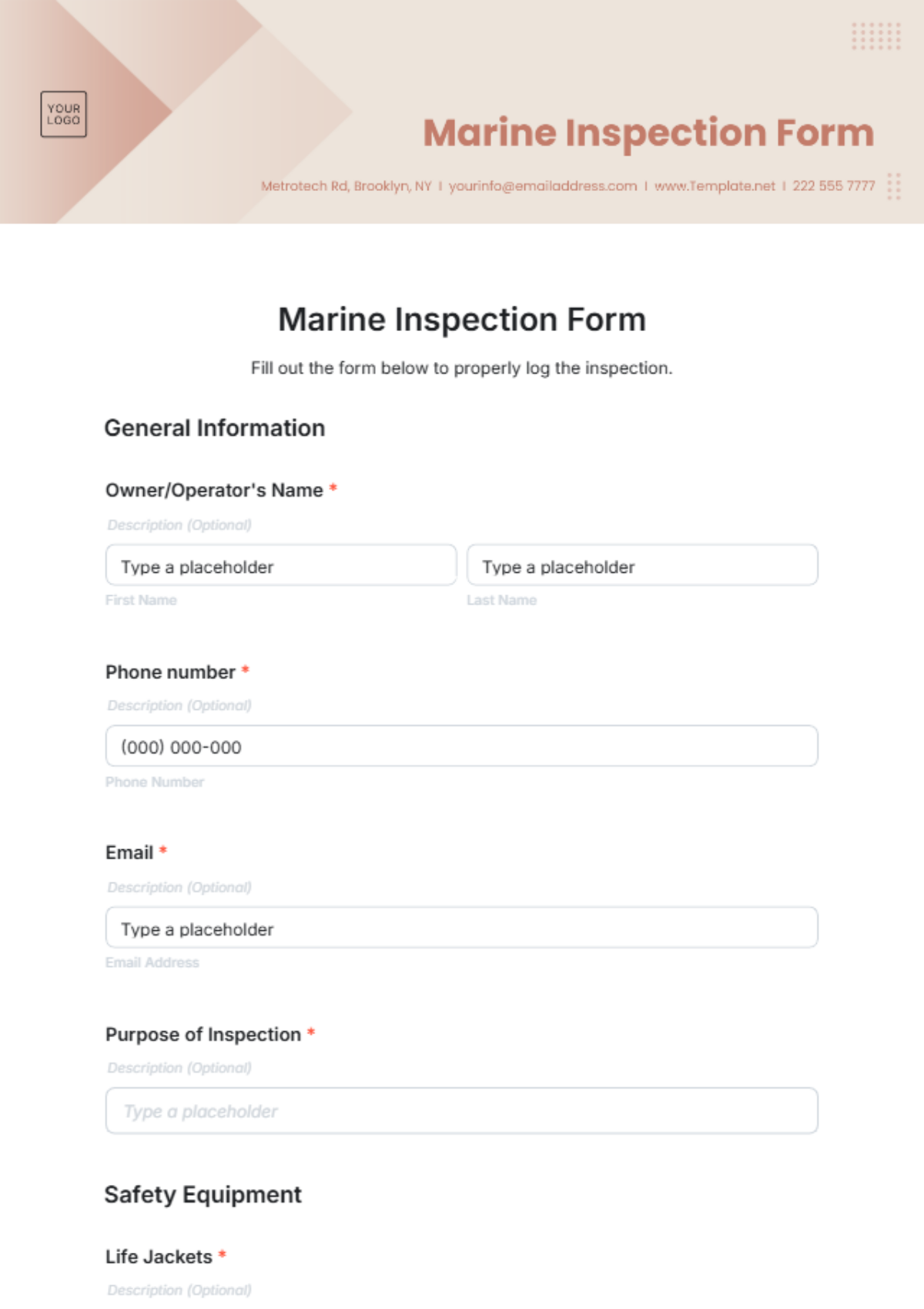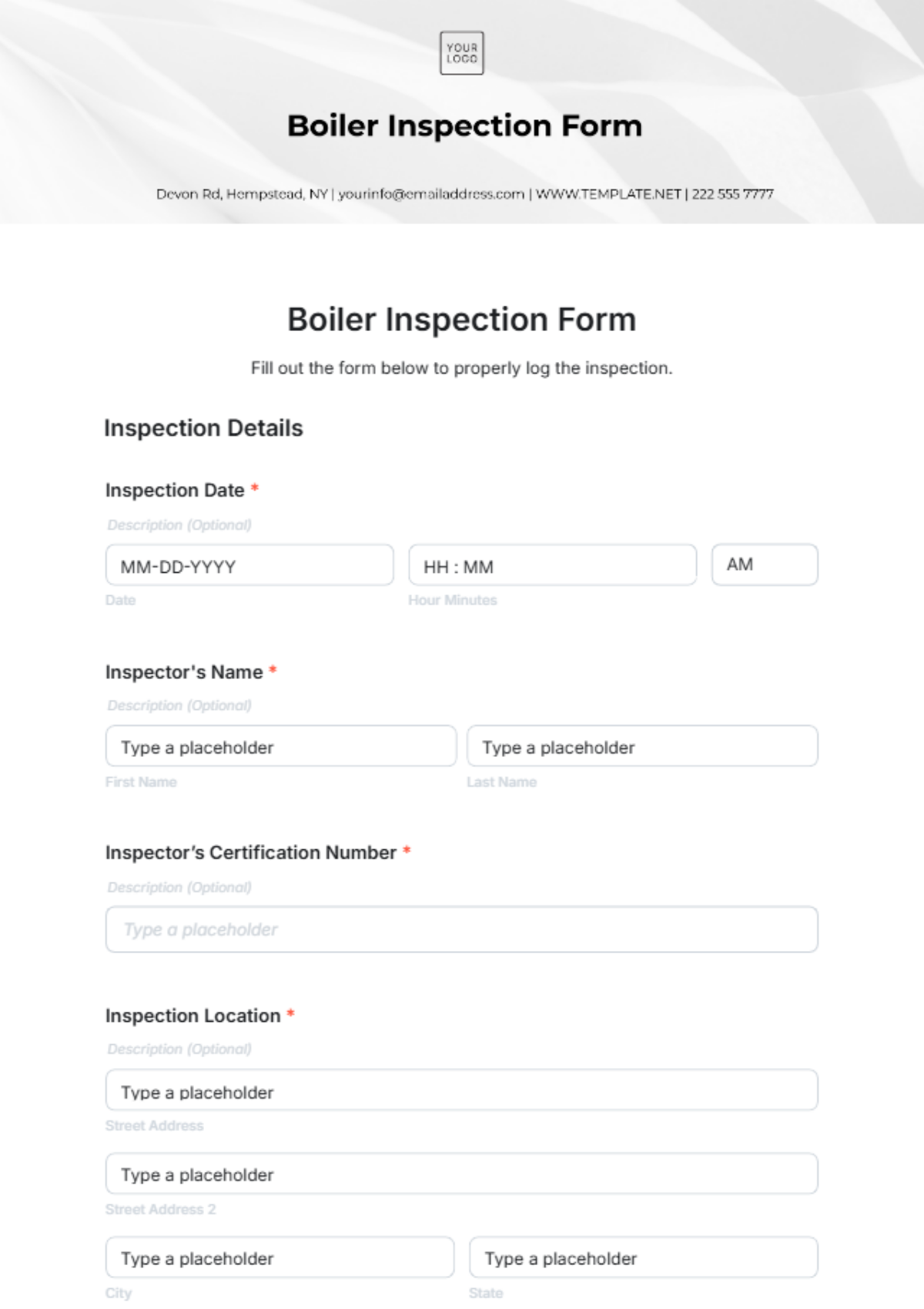Health & Safety Inspection Checklist
Ensure a safe working environment by using this checklist to identify potential hazards and verify compliance with safety standards.
Inspection Date
Inspector's Name
Location
I. Safety Equipment
A. Fire Extinguishers
Accessible and easily identifiable
Properly charged and operational
Inspection tags are up-to-date
Clear signage indicating locations
Monthly check logs maintained
B. First Aid Kits
Fully stocked with bandages, antiseptics, and other supplies
Items have not expired
Clearly marked and easily accessible
Regular inspection and restocking schedule in place
First aid instructions are visible
C. Emergency Exits
Clearly marked with illuminated signs
Routes to exits are unobstructed
Doors open easily and are not locked
Exit routes are regularly reviewed and tested
Emergency lighting functional and tested
D. Emergency Alarms and Systems
Alarms tested regularly for functionality
Clear and audible in all areas
Alarm locations are clearly marked
Emergency procedures are posted and up-to-date
Staff trained on alarm response
E. Safety Drills
Regularly scheduled and documented
Participation from all employees
Follow-up on drill effectiveness
Issues identified during drills are addressed
Records of drills maintained
II. Hazard Identification
A. Slips, Trips, and Falls
Floors are clean, dry, and free of obstructions
Anti-slip mats or coverings in high-risk areas
Proper signage for wet or hazardous areas
Adequate lighting in walkways and staircases
Regular inspection of flooring and pathways
B. Machinery and Equipment
Machinery is properly maintained and serviced
Safety guards and emergency shut-offs are in place
Equipment is used according to manufacturer instructions
Training provided on safe operation
Regular inspections and maintenance logs updated
C. Electrical Hazards
Electrical panels and wiring are in good condition
No exposed or frayed wires
Outlets are not overloaded
Extension cords are in good condition and used properly
Electrical systems inspected by a licensed electrician
D. Chemical Hazards
Proper labeling and storage of chemicals
Material Safety Data Sheets (MSDS) available
Personal protective equipment (PPE) used as required
Spill containment and clean-up procedures in place
Regular training on chemical handling and emergency procedures
E. Fire Hazards
Flammable materials stored properly
Fire lanes and access points are clear
Regular inspection of fire alarm systems
Compliance with fire safety regulations
Staff trained on fire emergency procedures
III. Personal Protective Equipment (PPE)
A. Availability
PPE is readily available for all tasks requiring it
PPE is provided in sufficient quantities
PPE meets regulatory standards
Specialized PPE available for specific hazards
PPE storage areas are clean and organized
B. Condition
PPE is in good repair and free from damage
Regular inspections and maintenance of PPE
Replacement of worn or damaged PPE
Proper cleaning procedures for reusable PPE
Records of PPE condition and replacement kept
C. Usage
Employees are trained in correct PPE usage
PPE is worn as required during specific tasks
Compliance with PPE policies monitored
PPE usage is enforced by supervisors
Feedback from employees on PPE comfort and fit collected
D. Training
Regular training on proper use and maintenance of PPE
Training records maintained and up-to-date
Refresher courses provided as needed
Training includes emergency procedures involving PPE
New employees receive PPE training during orientation
E. PPE Signage
Clear signage indicating required PPE for specific areas
Signs are in visible locations
Signage updated as hazards or requirements change
Regular review of signage effectiveness
Feedback on signage clarity collected from employees
IV. Workplace Conditions
A. Ventilation
Ventilation systems are functioning properly
Regular maintenance and filter replacement
Adequate airflow in all work areas
Monitoring of air quality and exposure limits
Proper ventilation for hazardous materials or processes
B. Lighting
Adequate illumination in work and walking areas
Lighting fixtures are clean and functional
Replacement of burned-out bulbs and damaged fixtures
Emergency lighting systems operational
Regular inspection of lighting conditions
C. Temperature Control
Heating and cooling systems are functional
Temperature levels are within comfortable and safe ranges
Monitoring and adjustment of temperature as needed
Access to temperature control mechanisms for employees
Regular maintenance of HVAC systems
D. Noise Levels
Monitoring of noise levels to ensure they are within acceptable limits
Noise control measures implemented in high-noise areas
Provision of hearing protection where necessary
Regular noise assessments conducted
Employee feedback on noise levels collected
E. Cleanliness and Hygiene
Regular cleaning and maintenance of work areas
Availability of handwashing facilities and sanitizers
Proper waste disposal and management
Clean and well-maintained restrooms
Regular inspections to ensure cleanliness standards are met
V. Compliance and Documentation
A. Regulatory Compliance
Adherence to local, state, and national safety regulations
Up-to-date with changes in safety laws and regulations
Regular review of compliance requirements
Documentation of compliance measures and actions
Audit and inspection reports reviewed for compliance
B. Training Records
Documentation of employee safety training and certifications
Records updated with recent training activities
Training programs evaluated for effectiveness
Tracking of renewal dates for certifications
New employees’ training records maintained
C. Incident Reports
Documentation of all accidents and near-misses
Follow-up actions and corrective measures recorded
Analysis of incidents to identify trends and preventive measures
Regular review of incident reports by management
Records of incidents and actions taken maintained
D. Safety Policies and Procedures
Up-to-date safety policies and procedures documented
Policies reviewed and revised regularly
Accessibility of policies to all employees
Training on new or updated policies provided
Documentation of policy distribution and acknowledgment
E. Audit and Inspection Records
Regular internal and external audits conducted
Documentation of audit findings and corrective actions
Tracking of inspection dates and results
Review of audit and inspection reports by relevant personnel
Action plans for addressing audit findings documented
